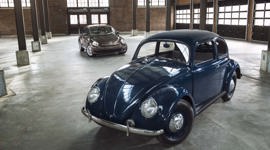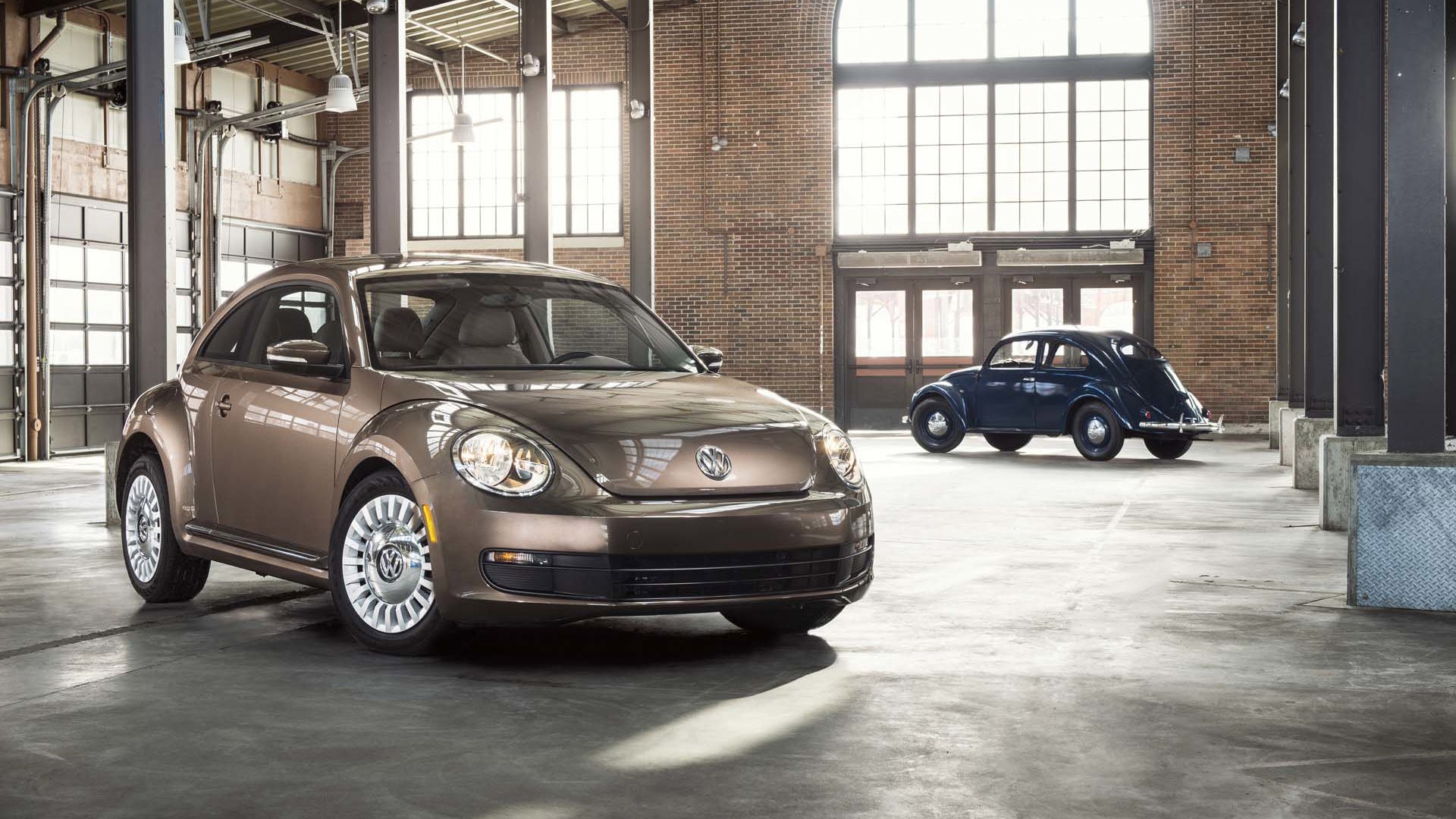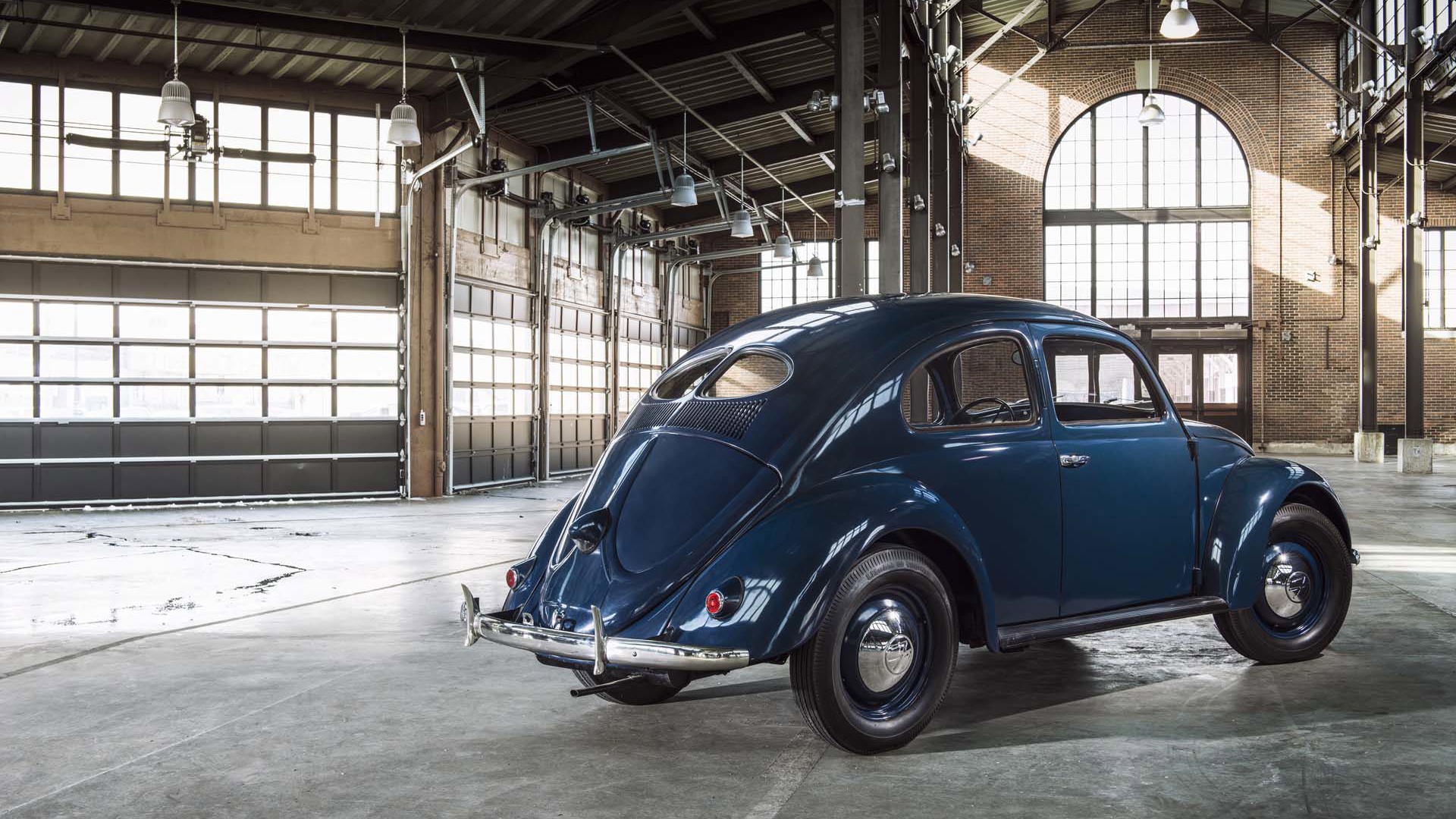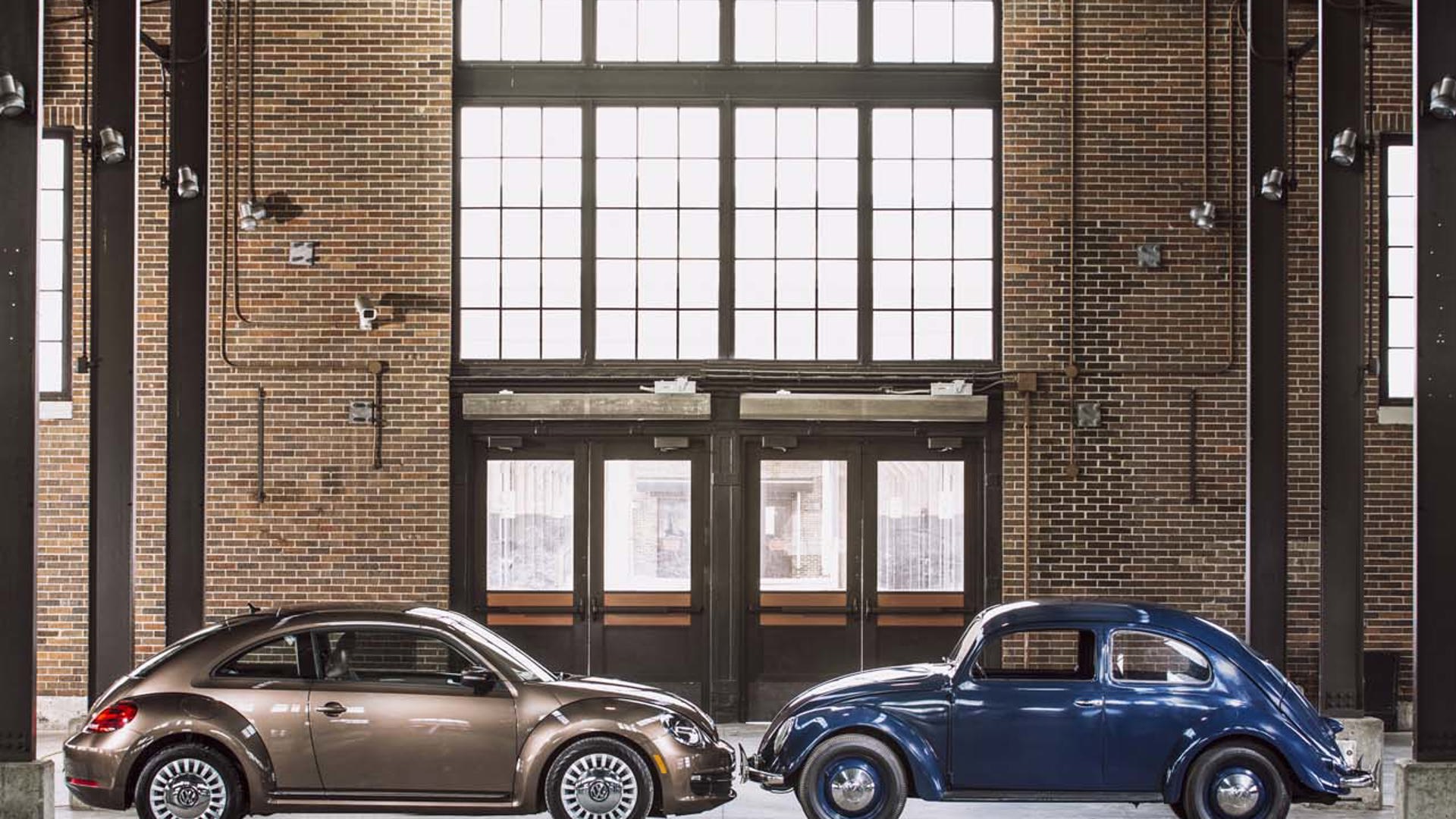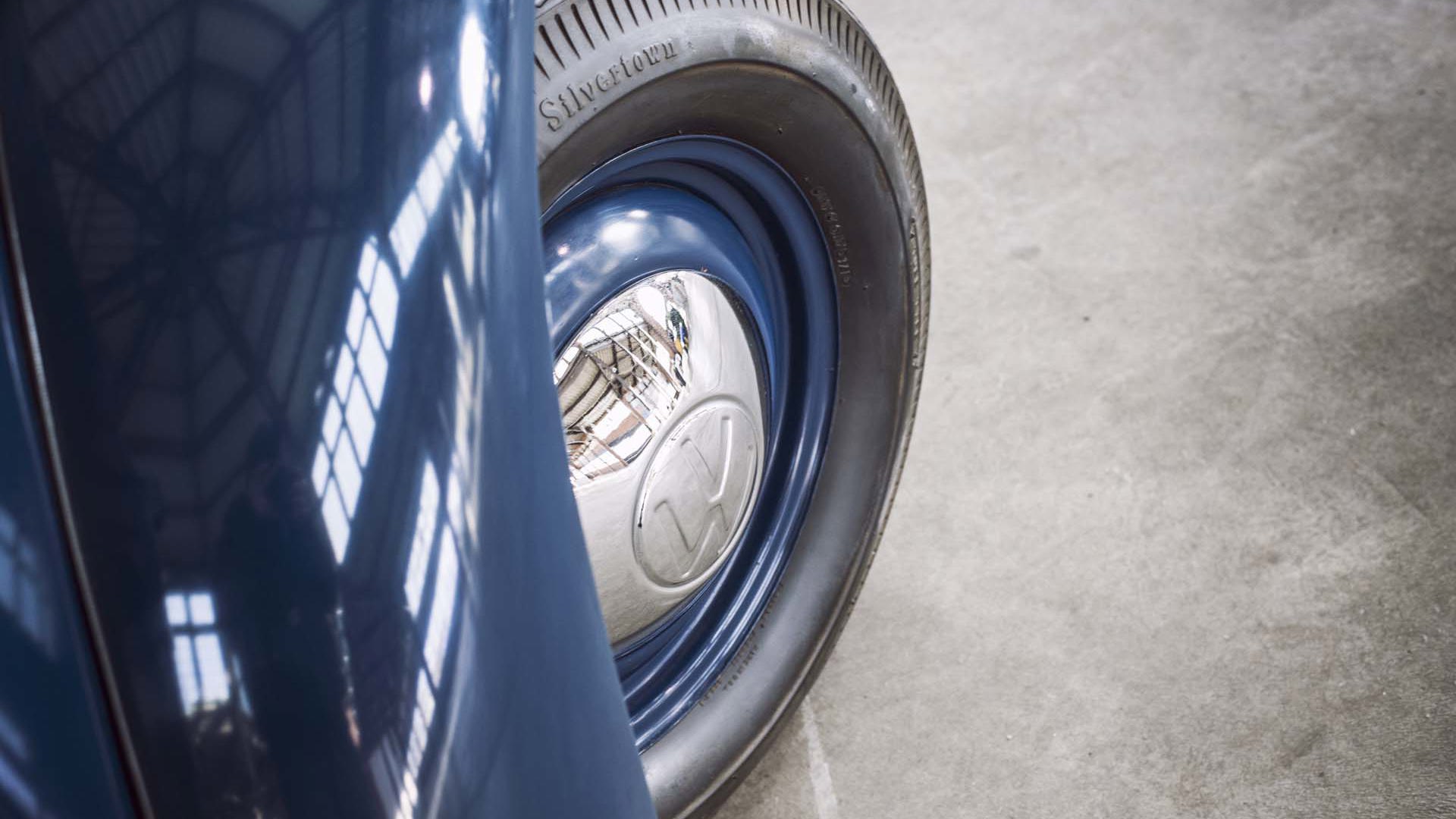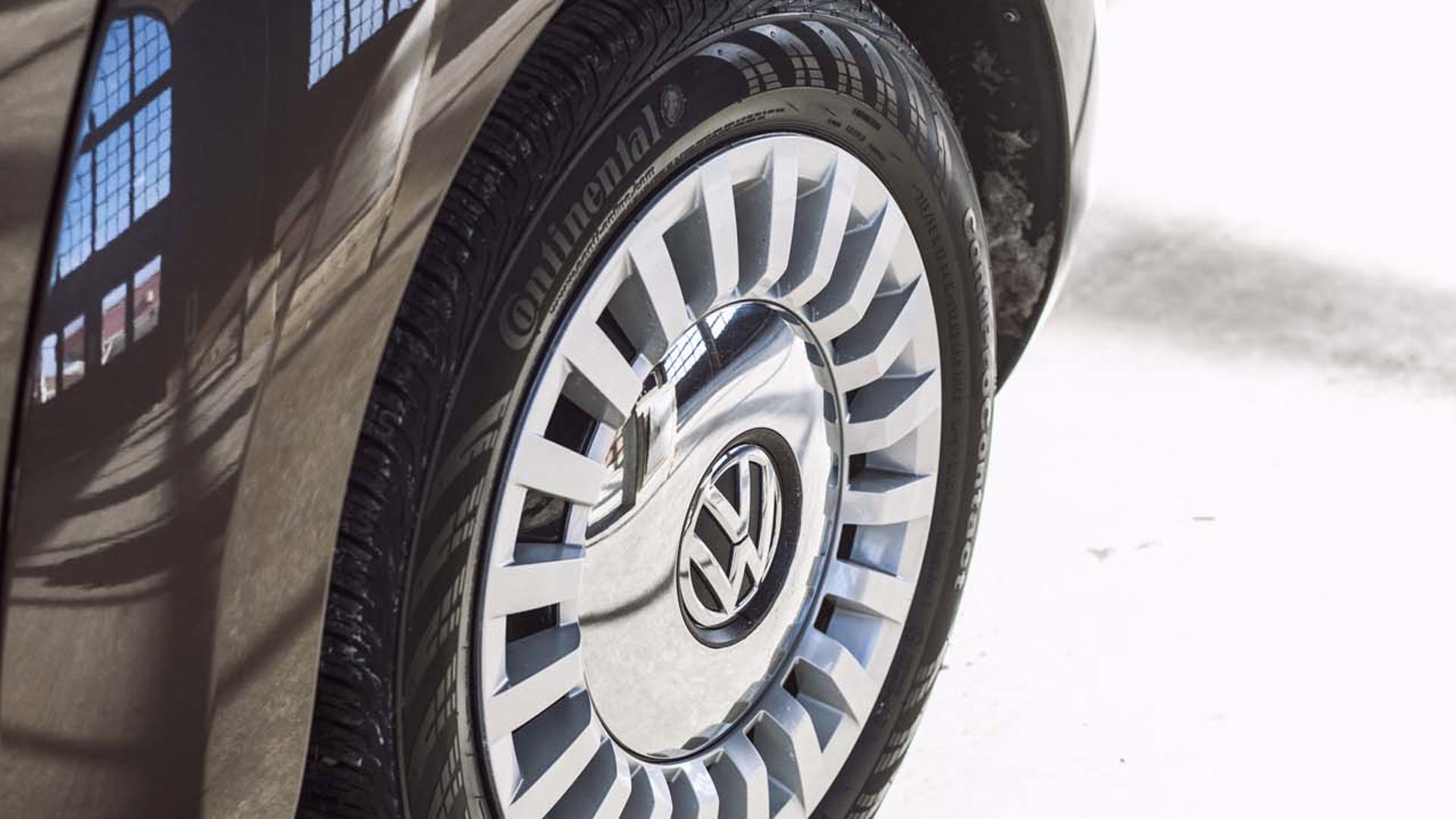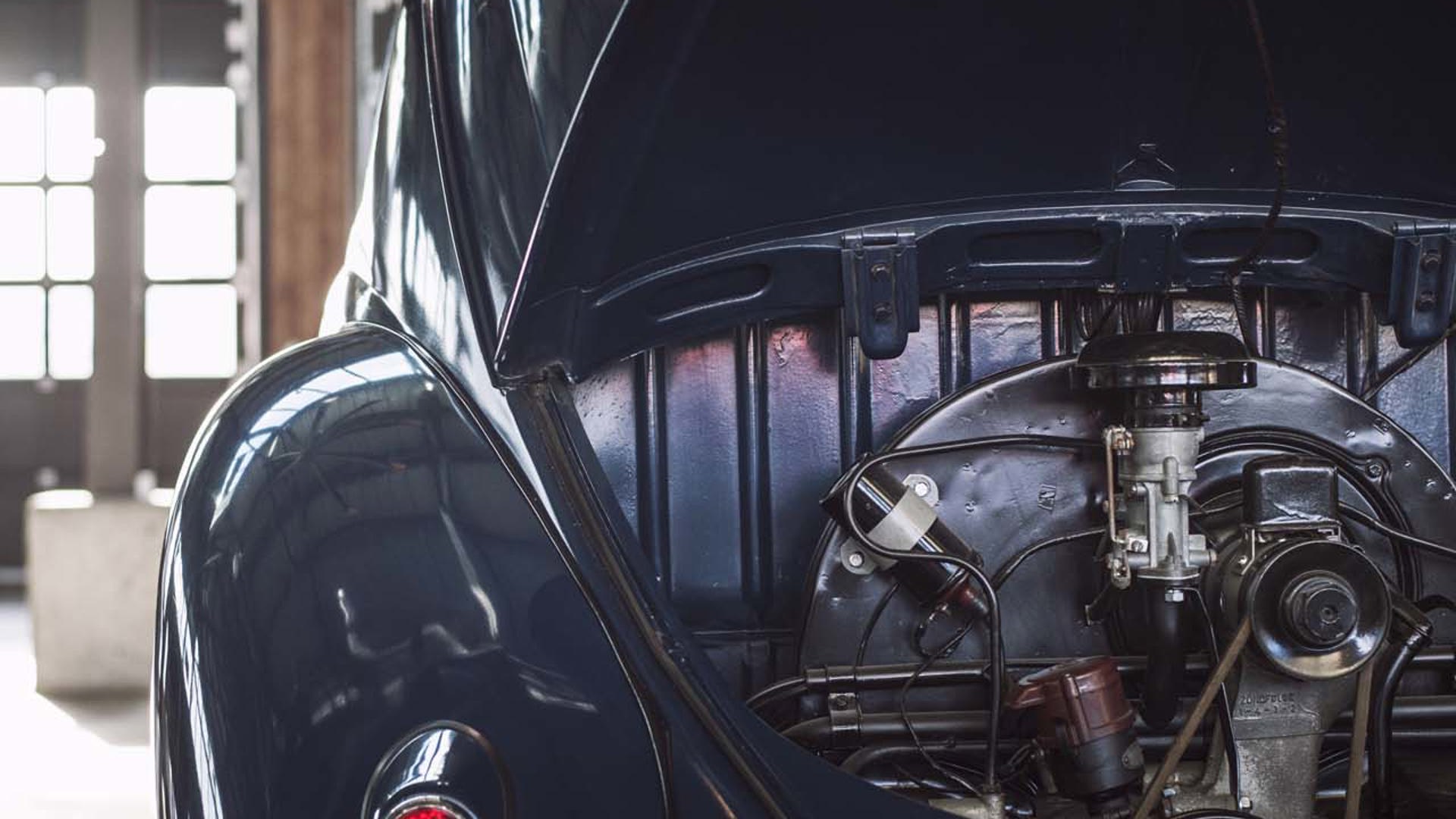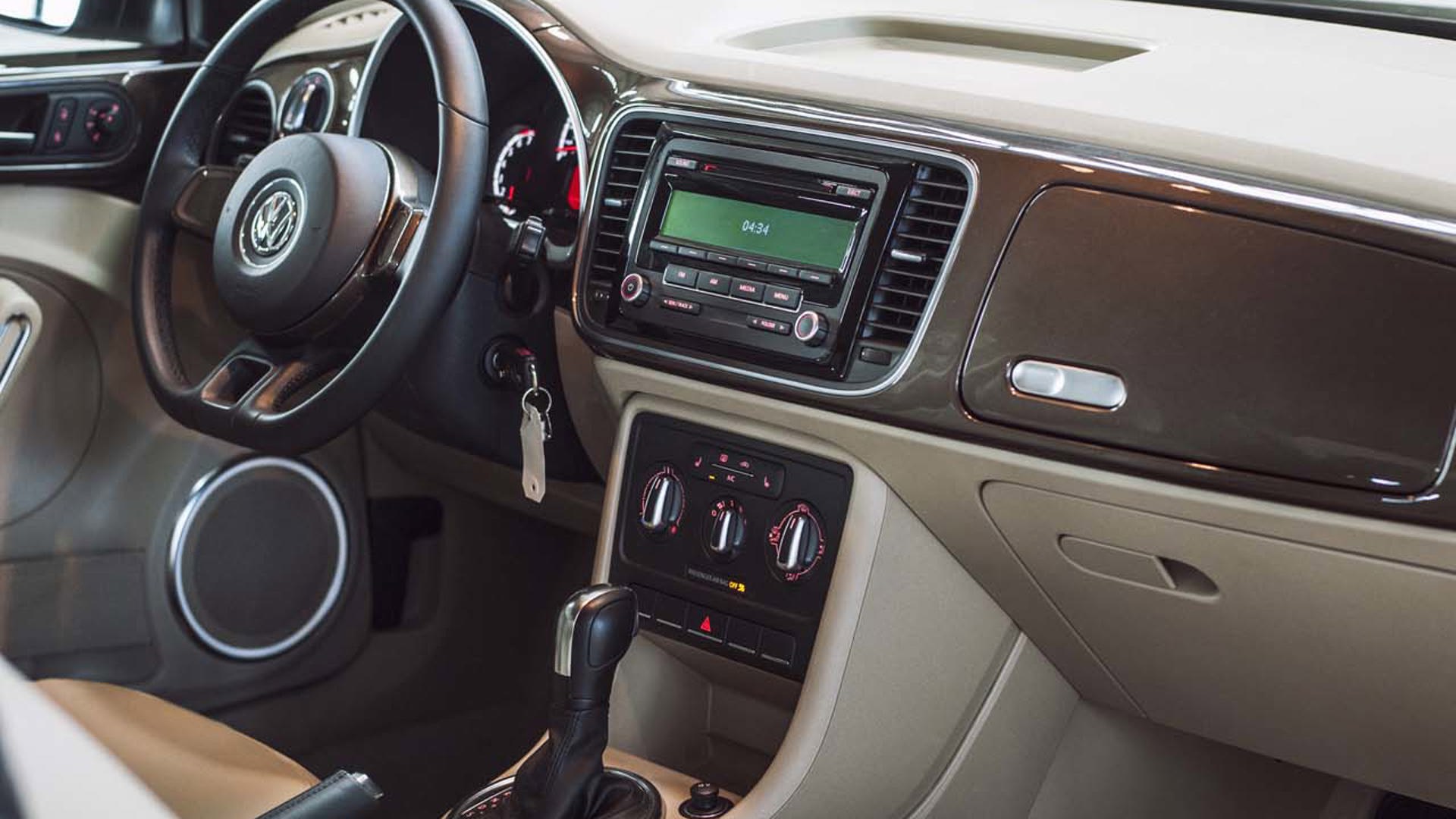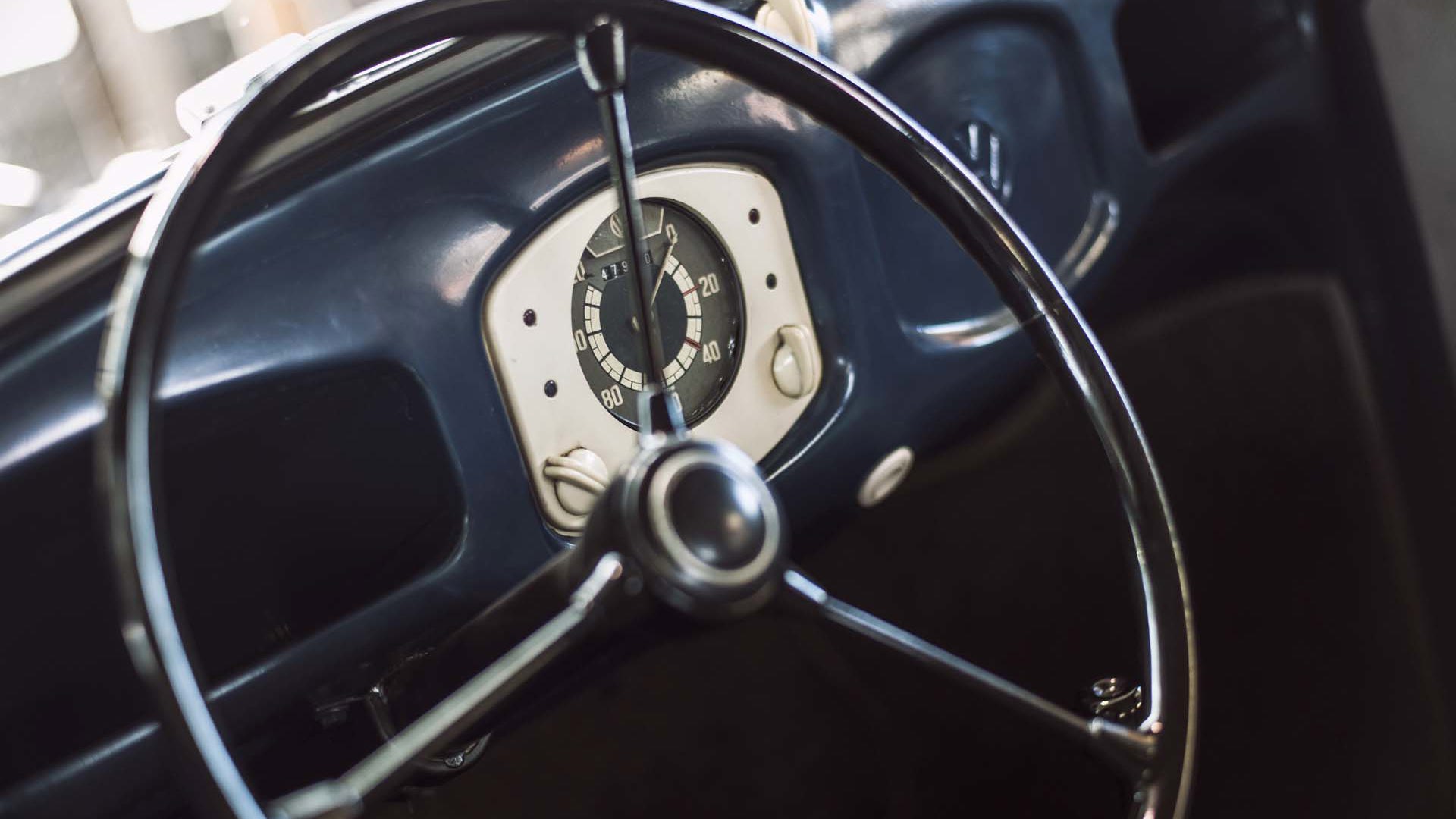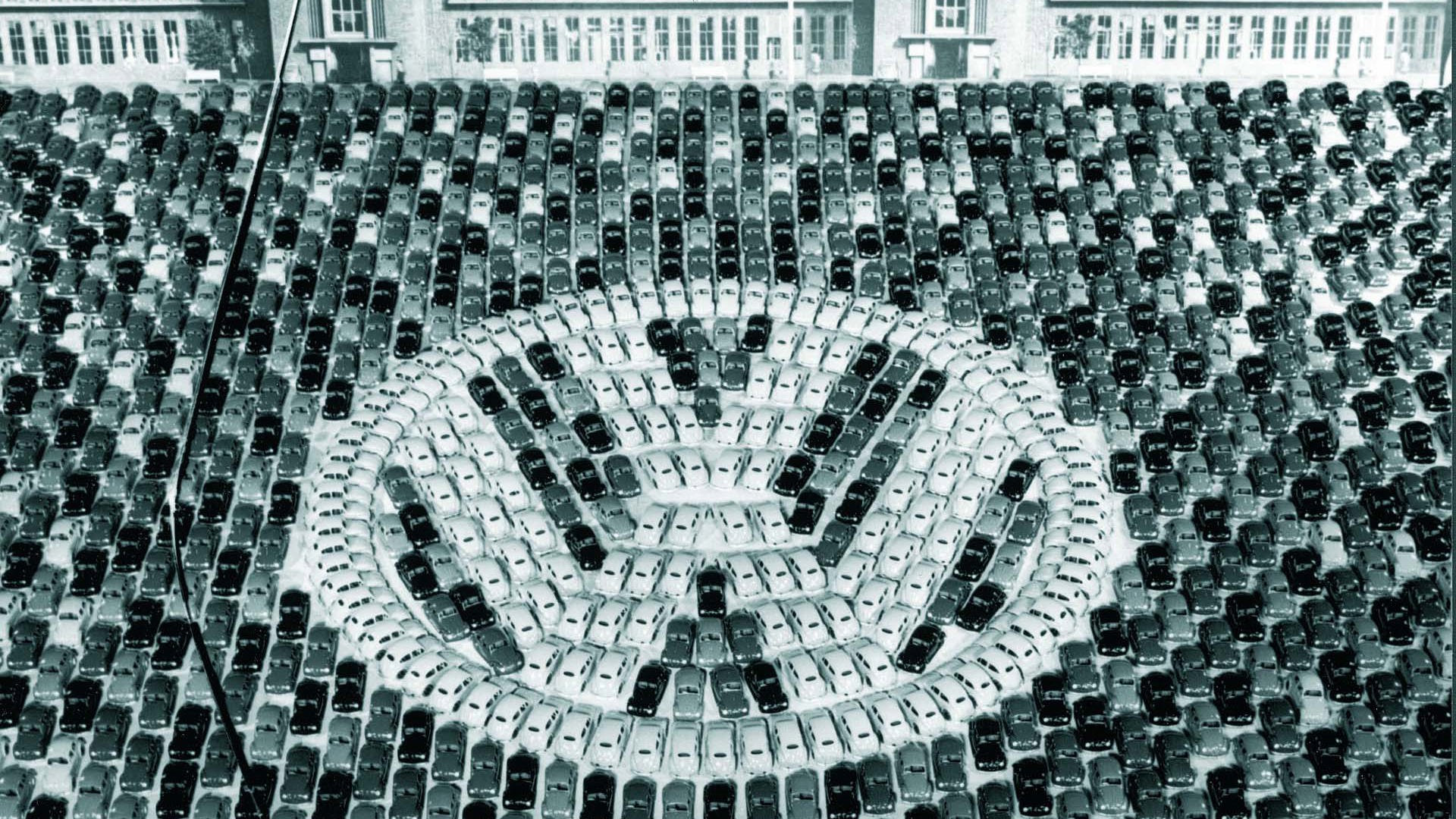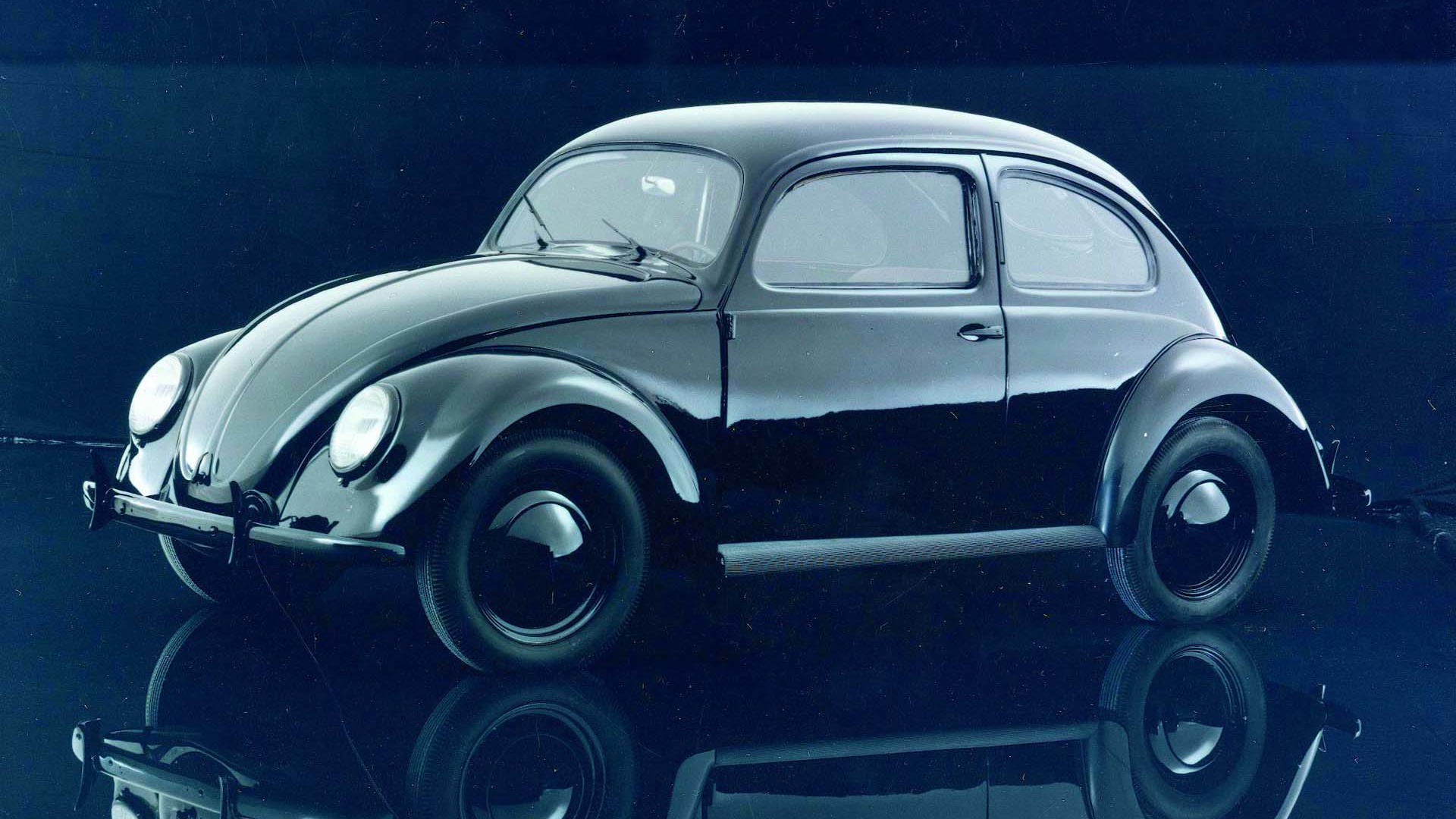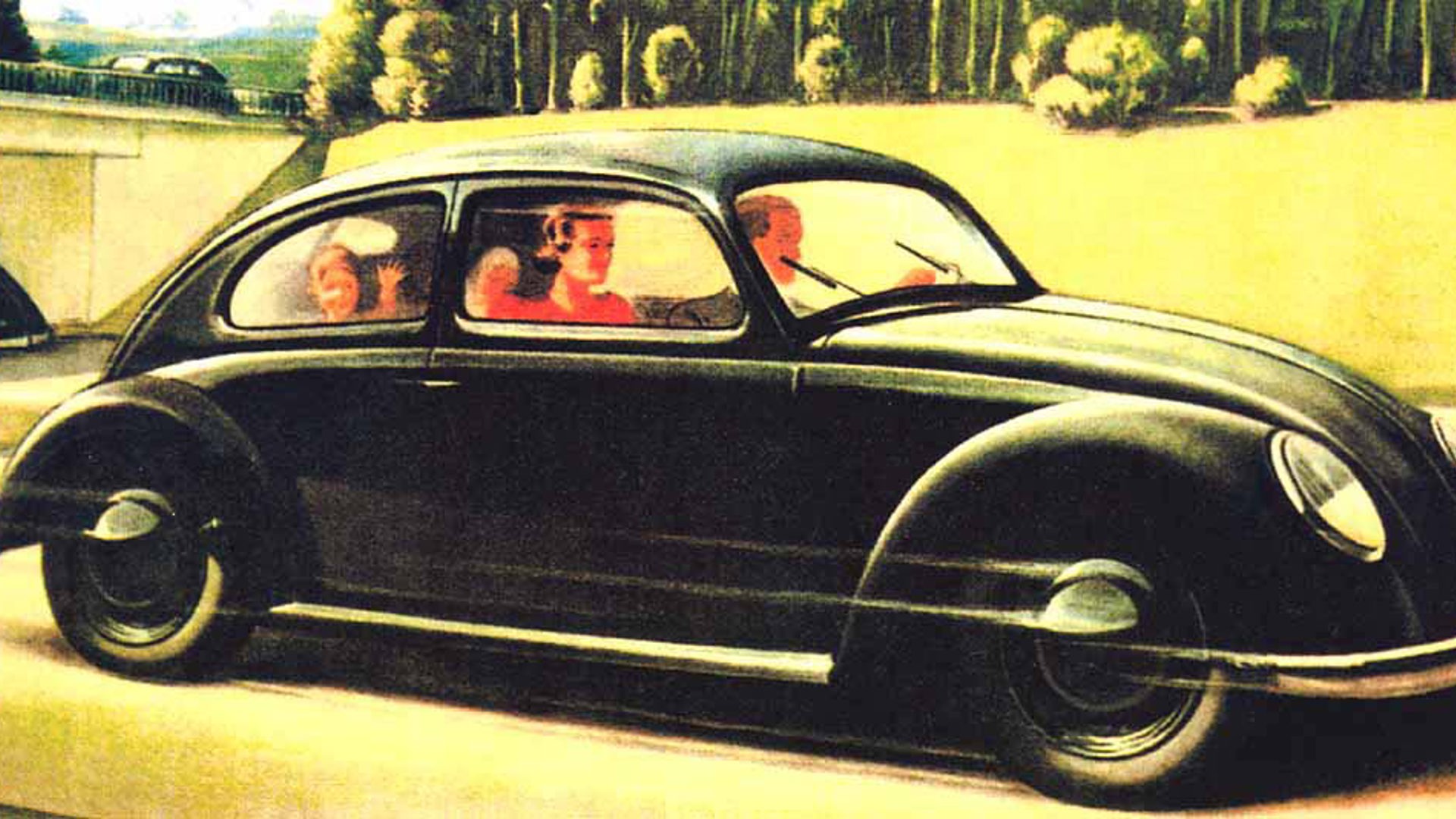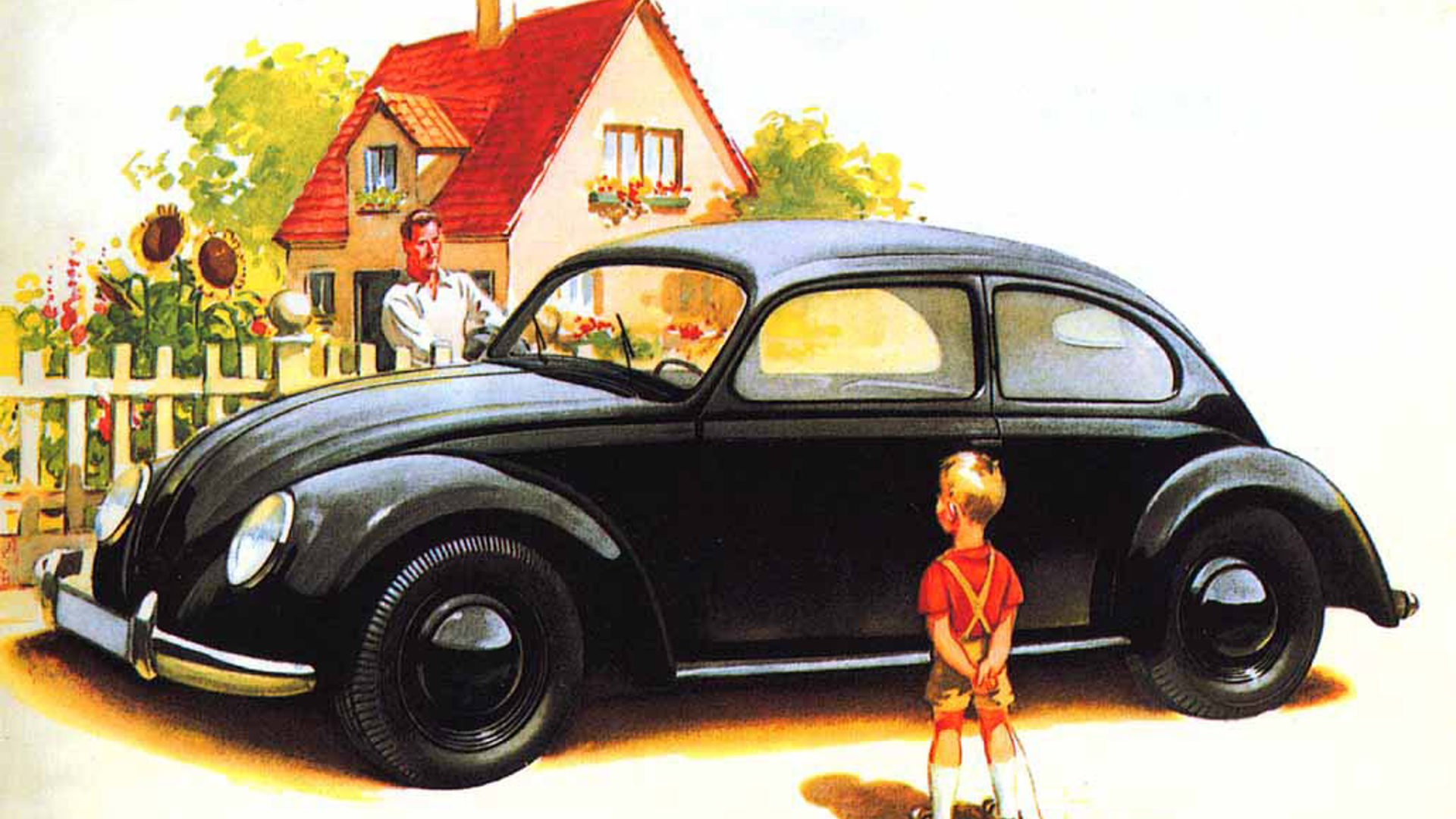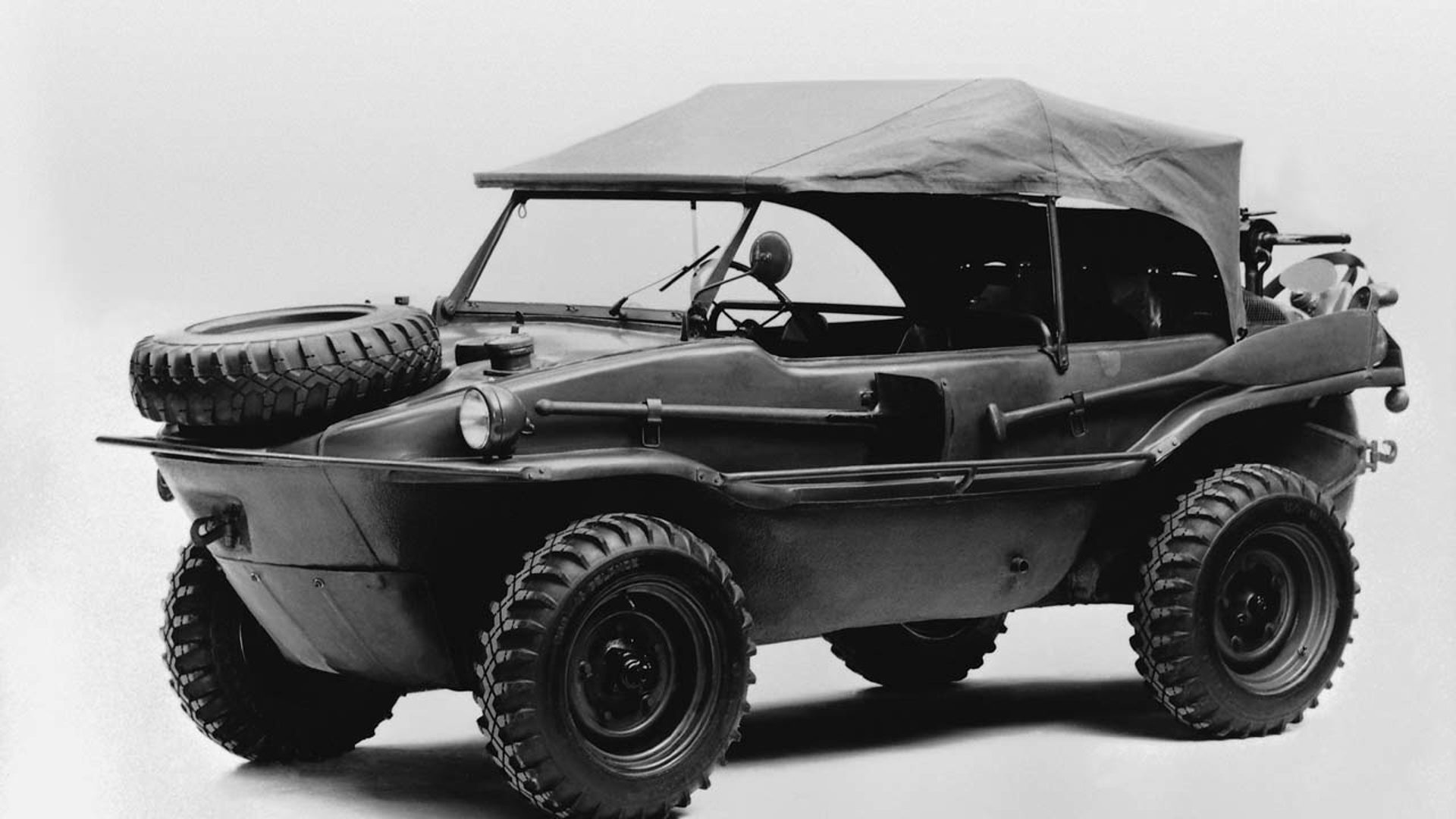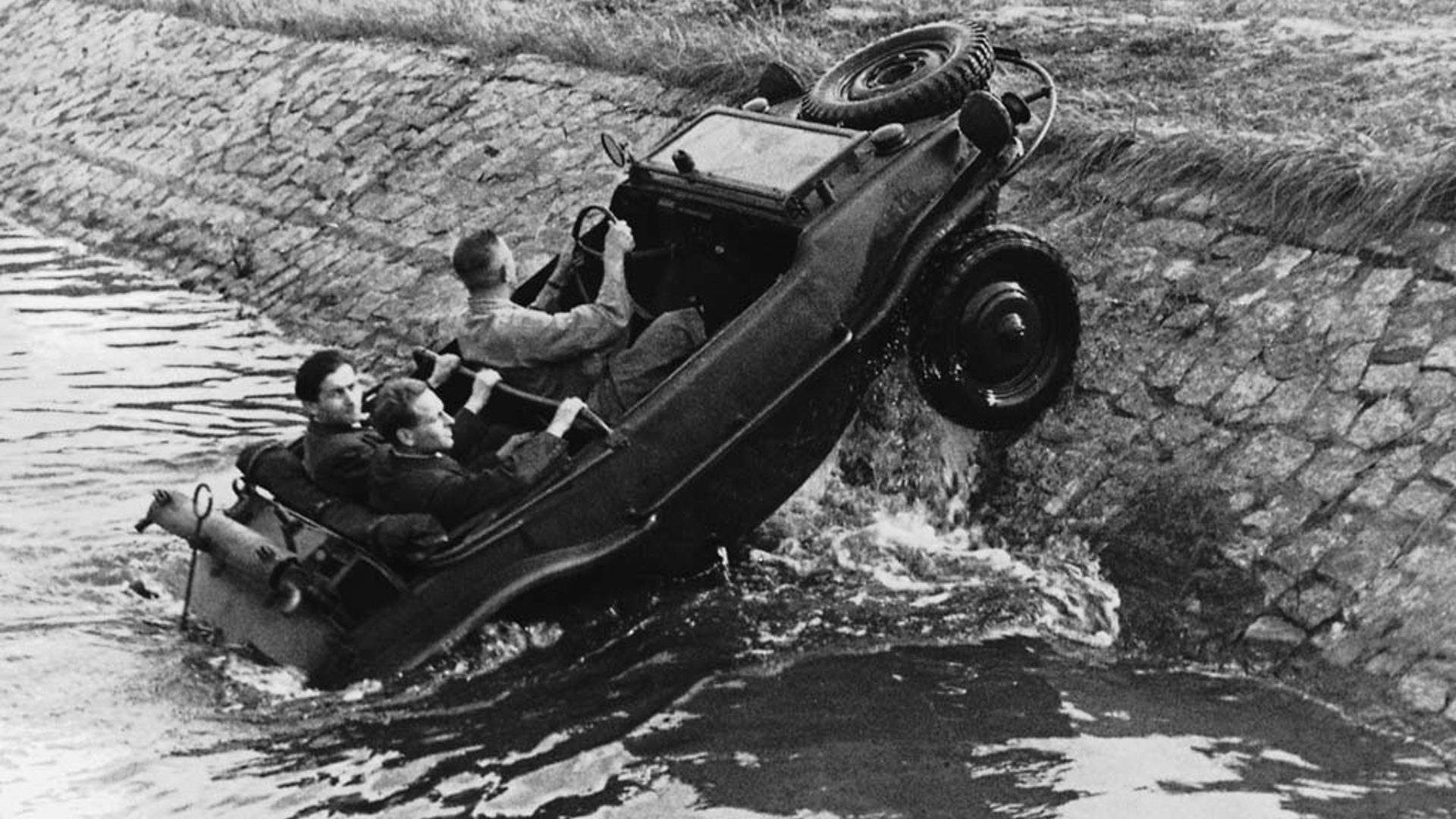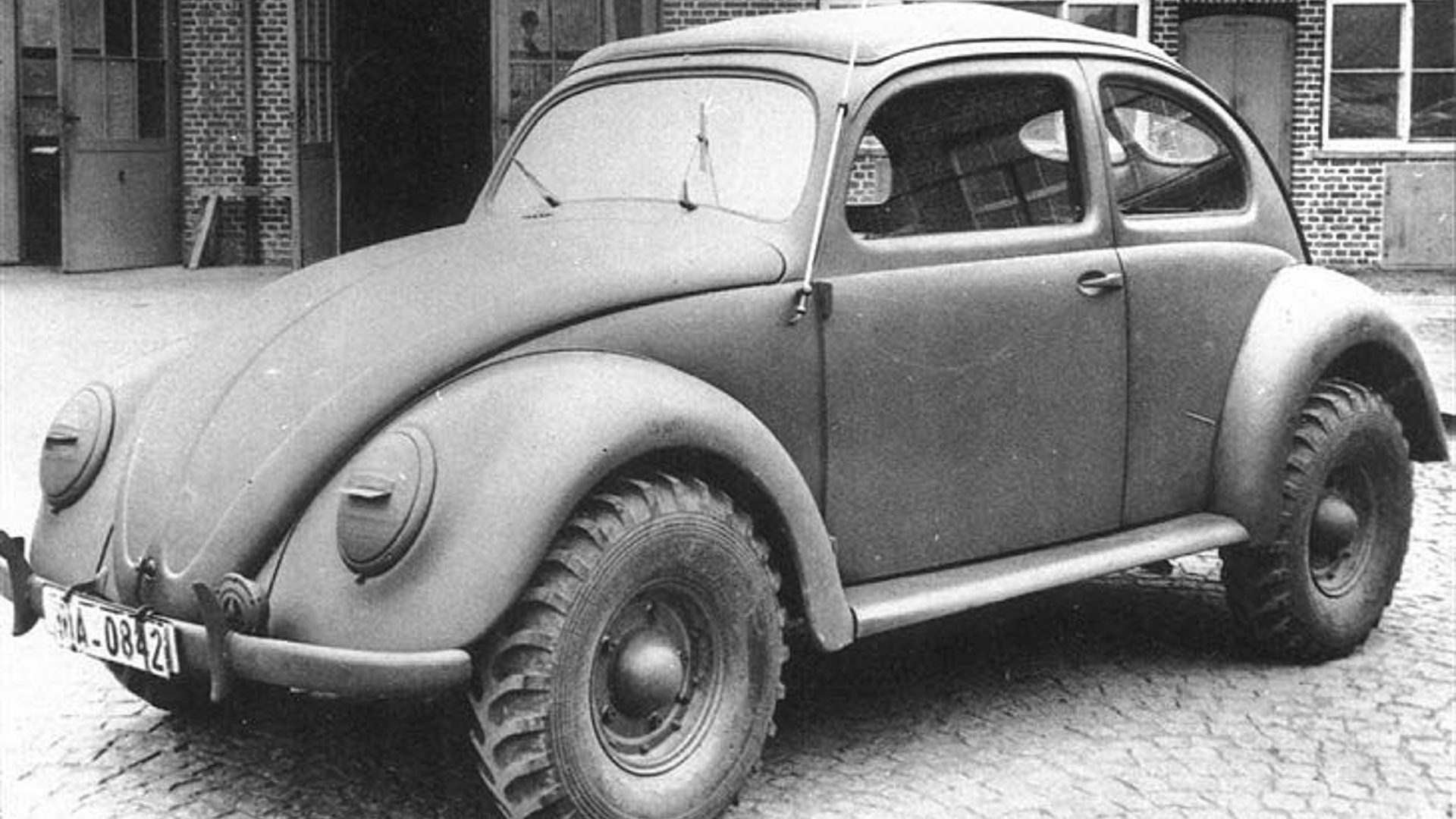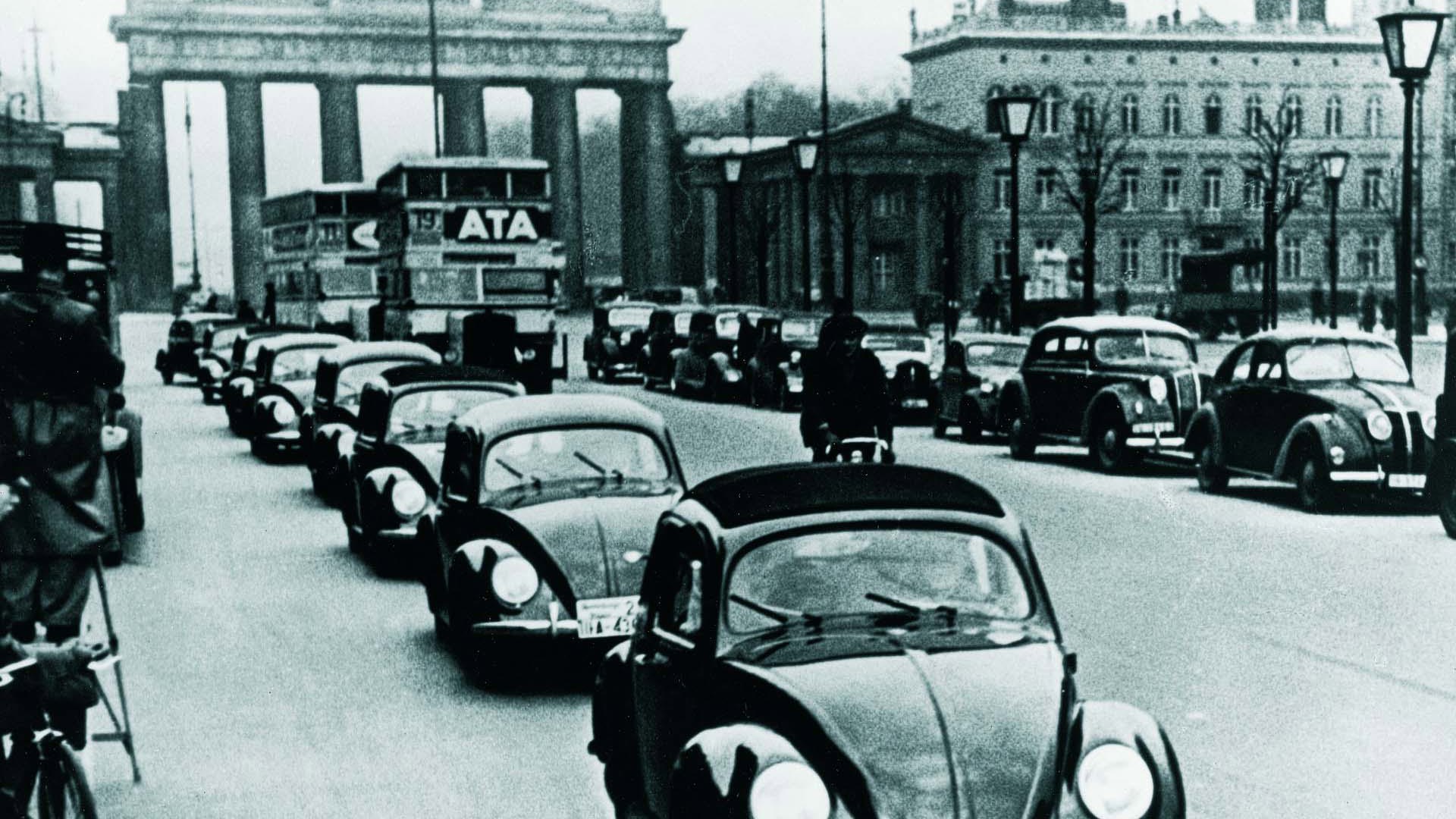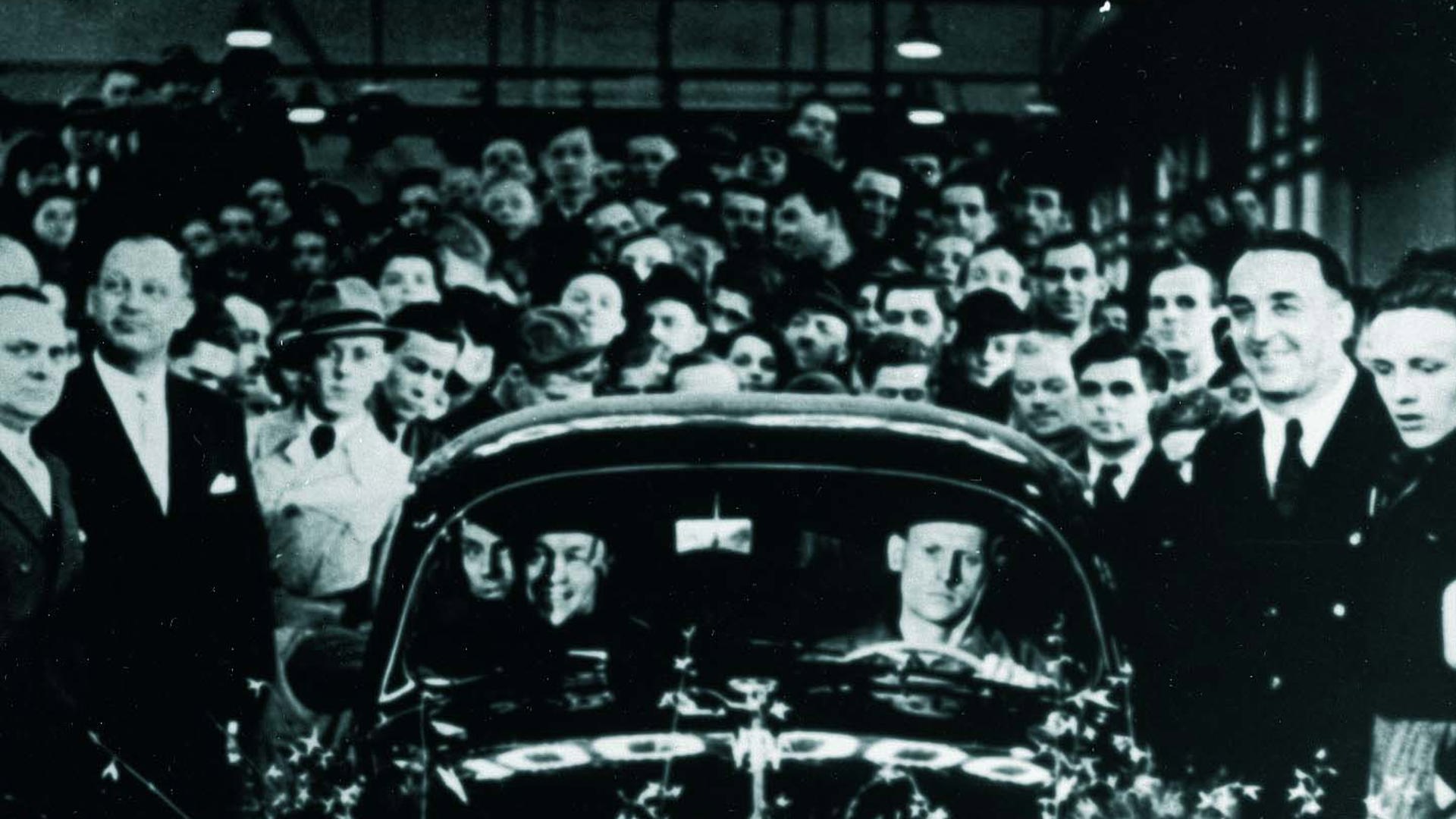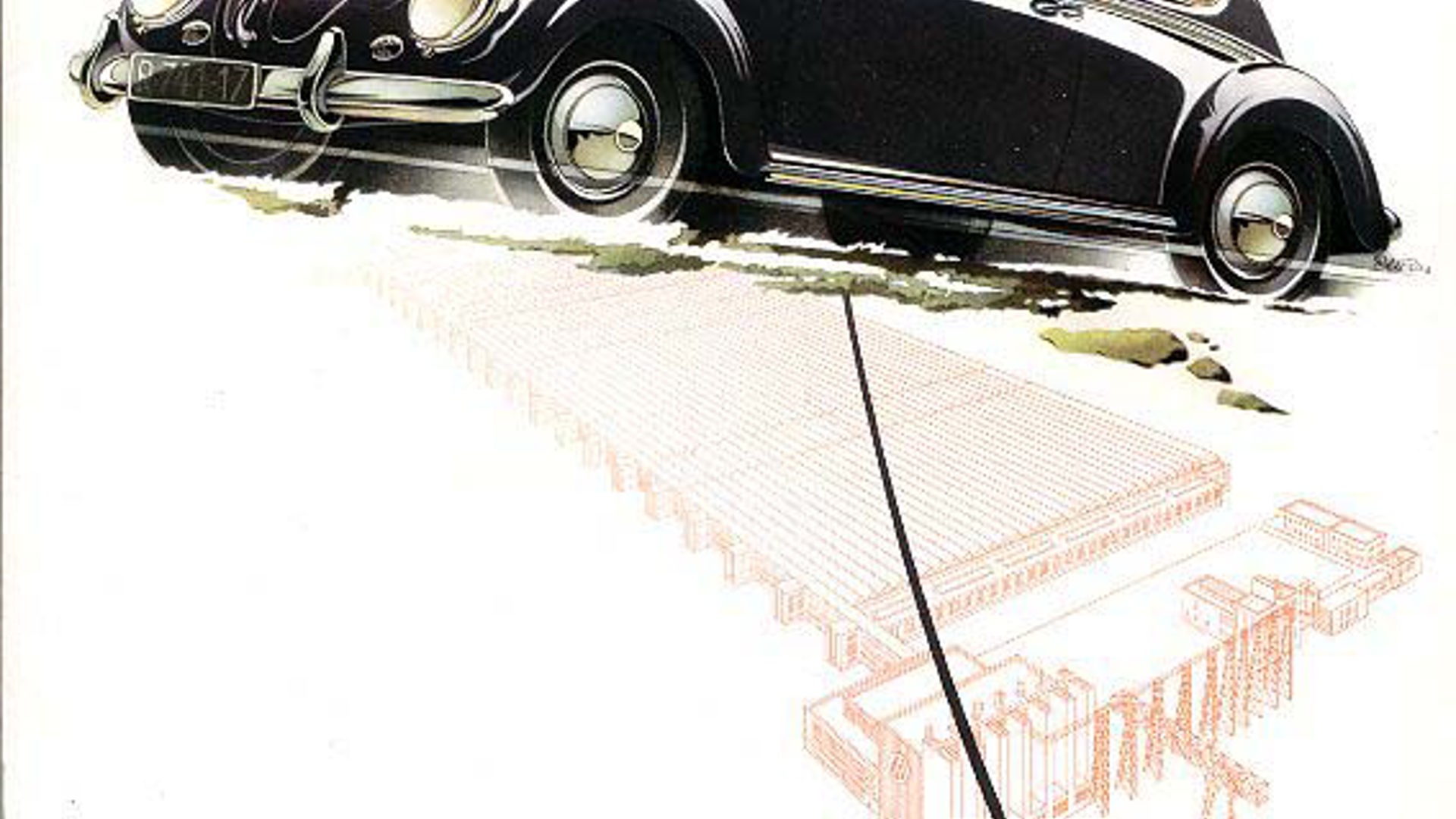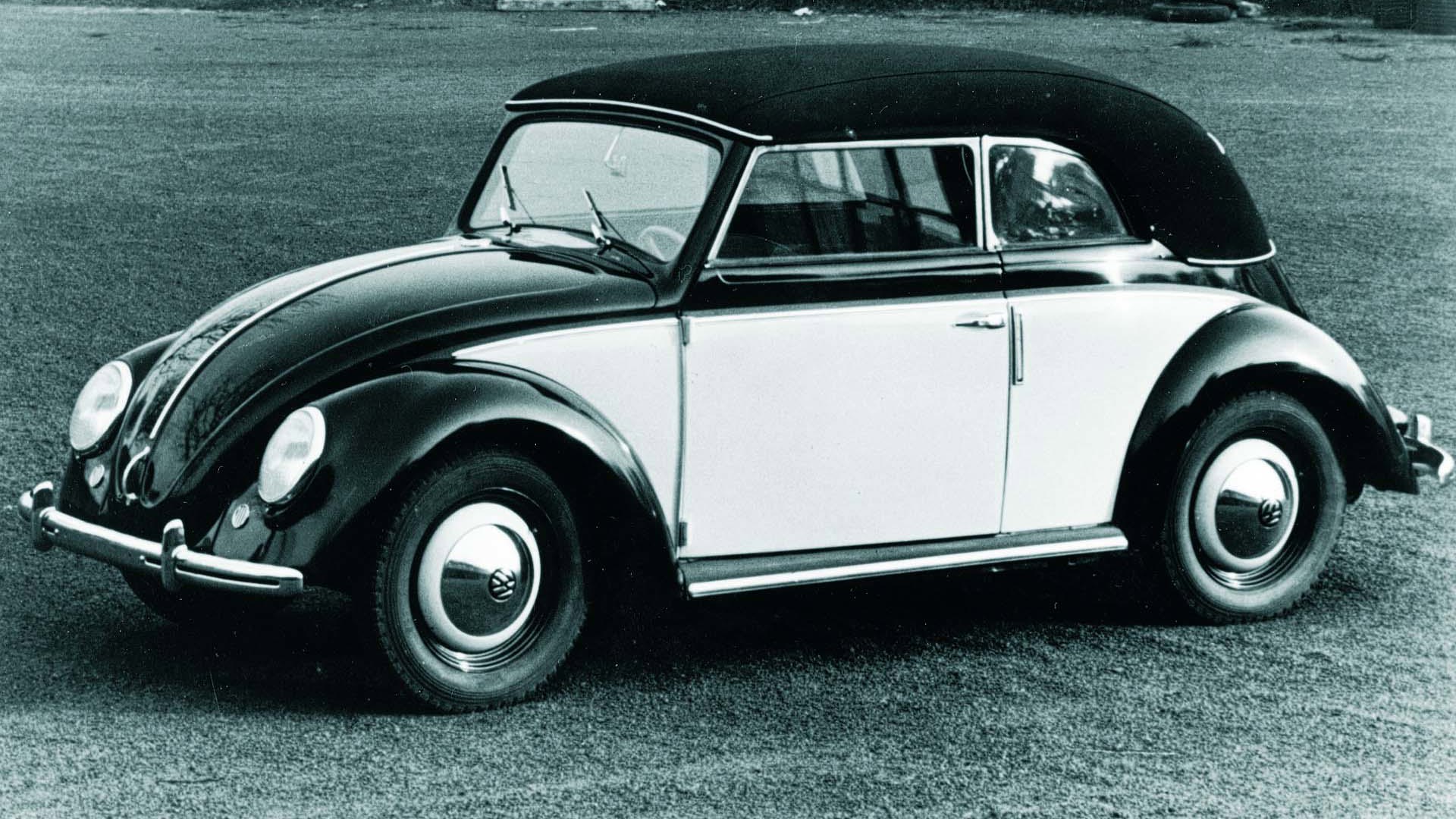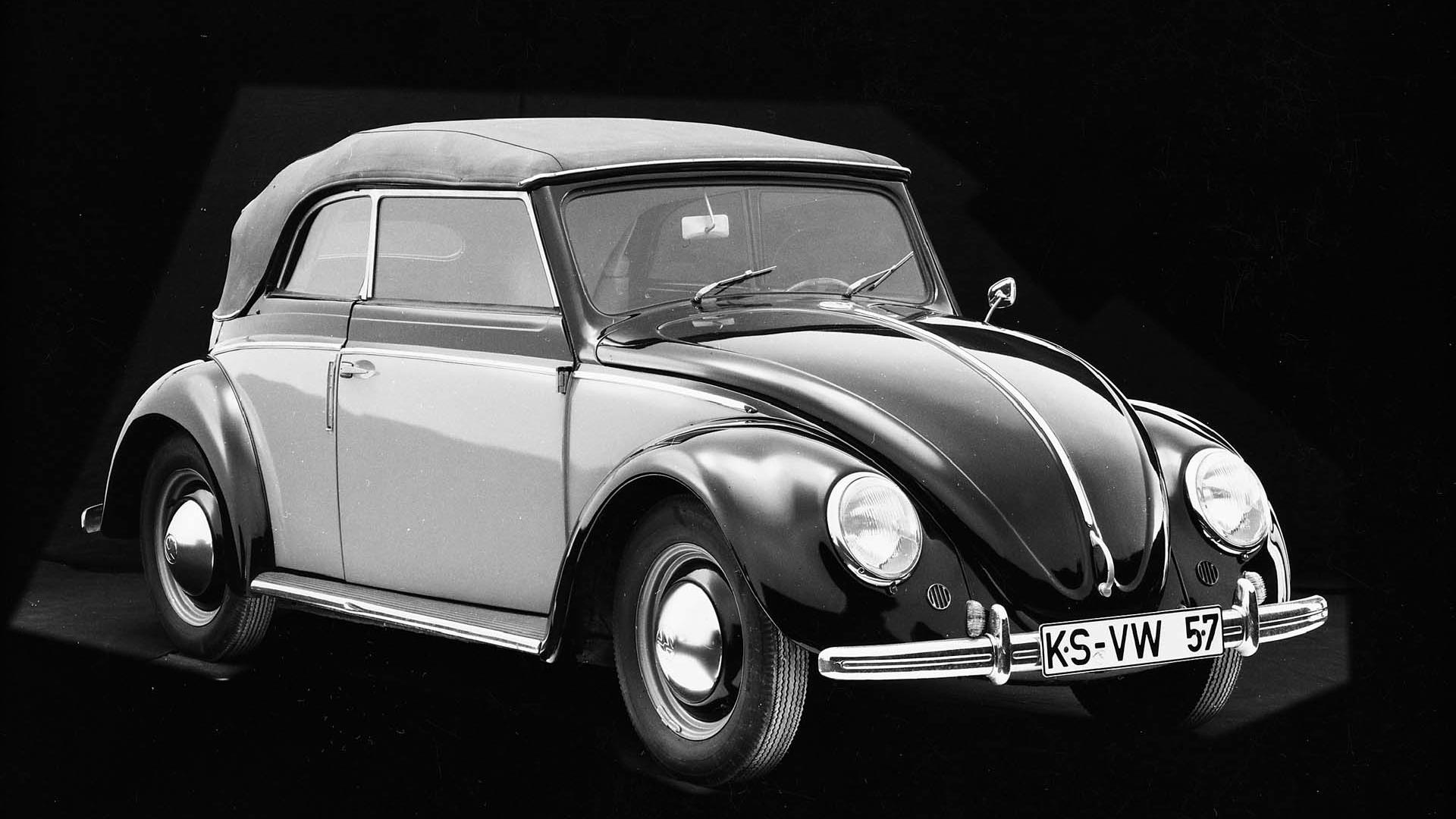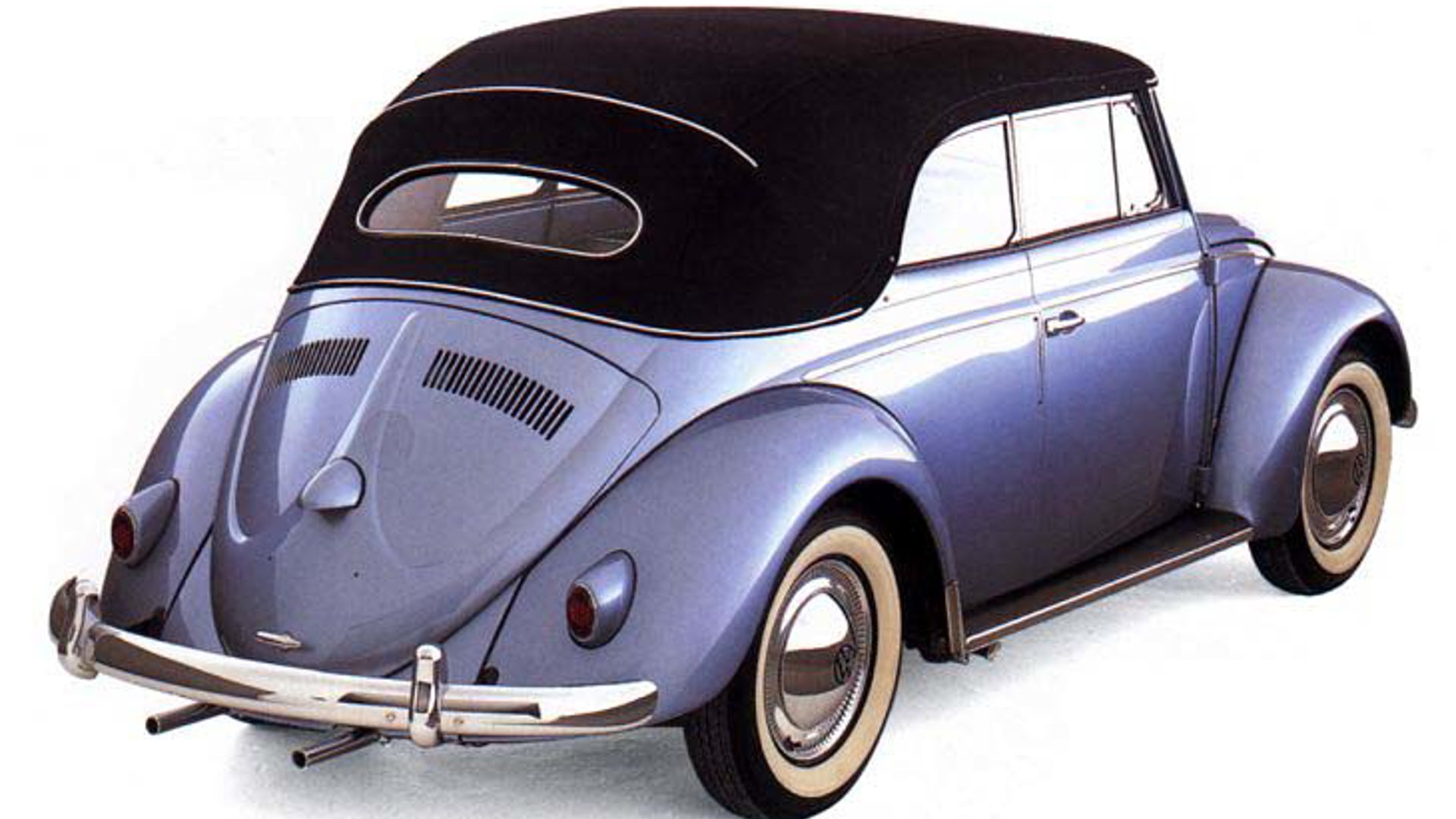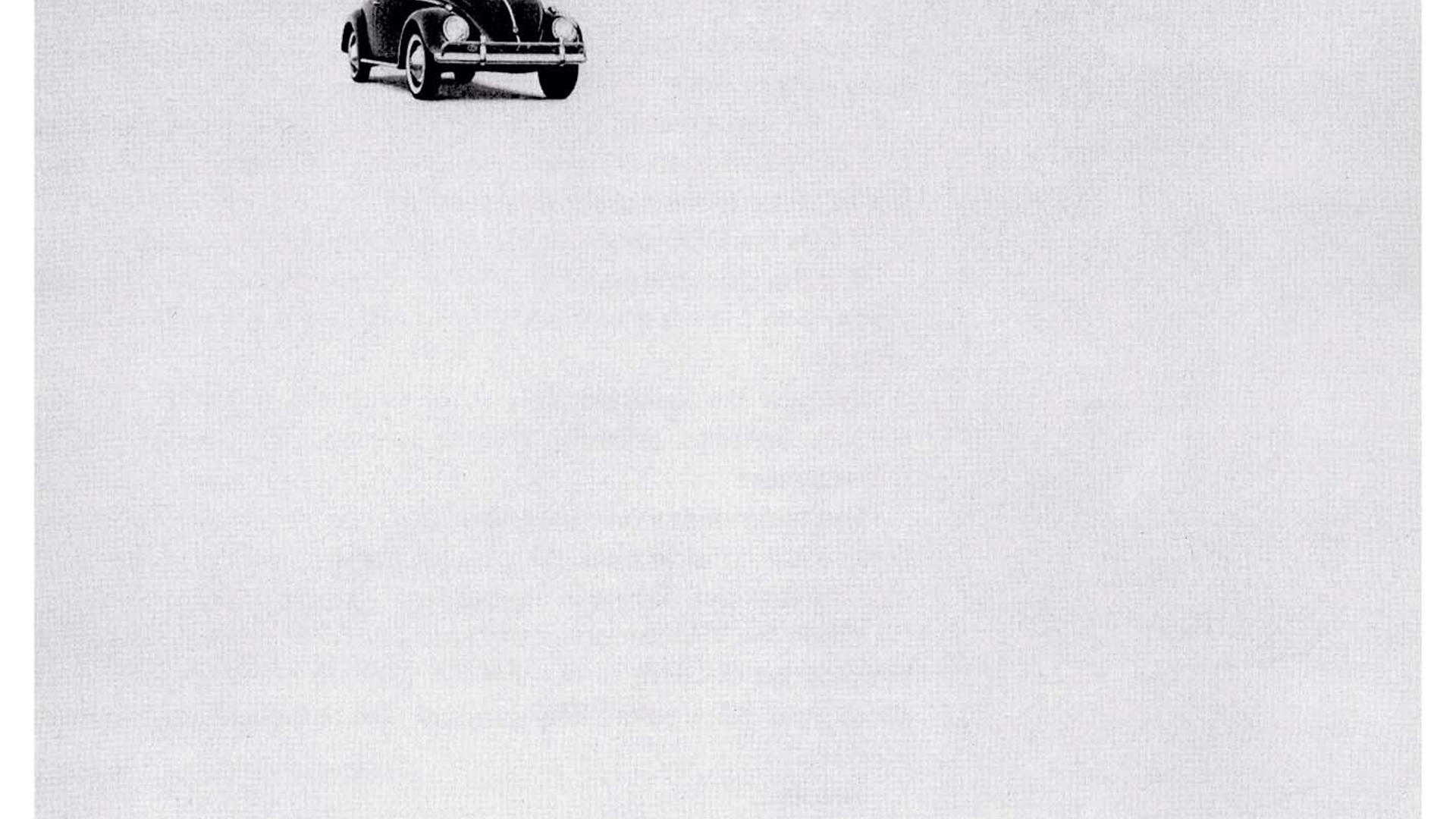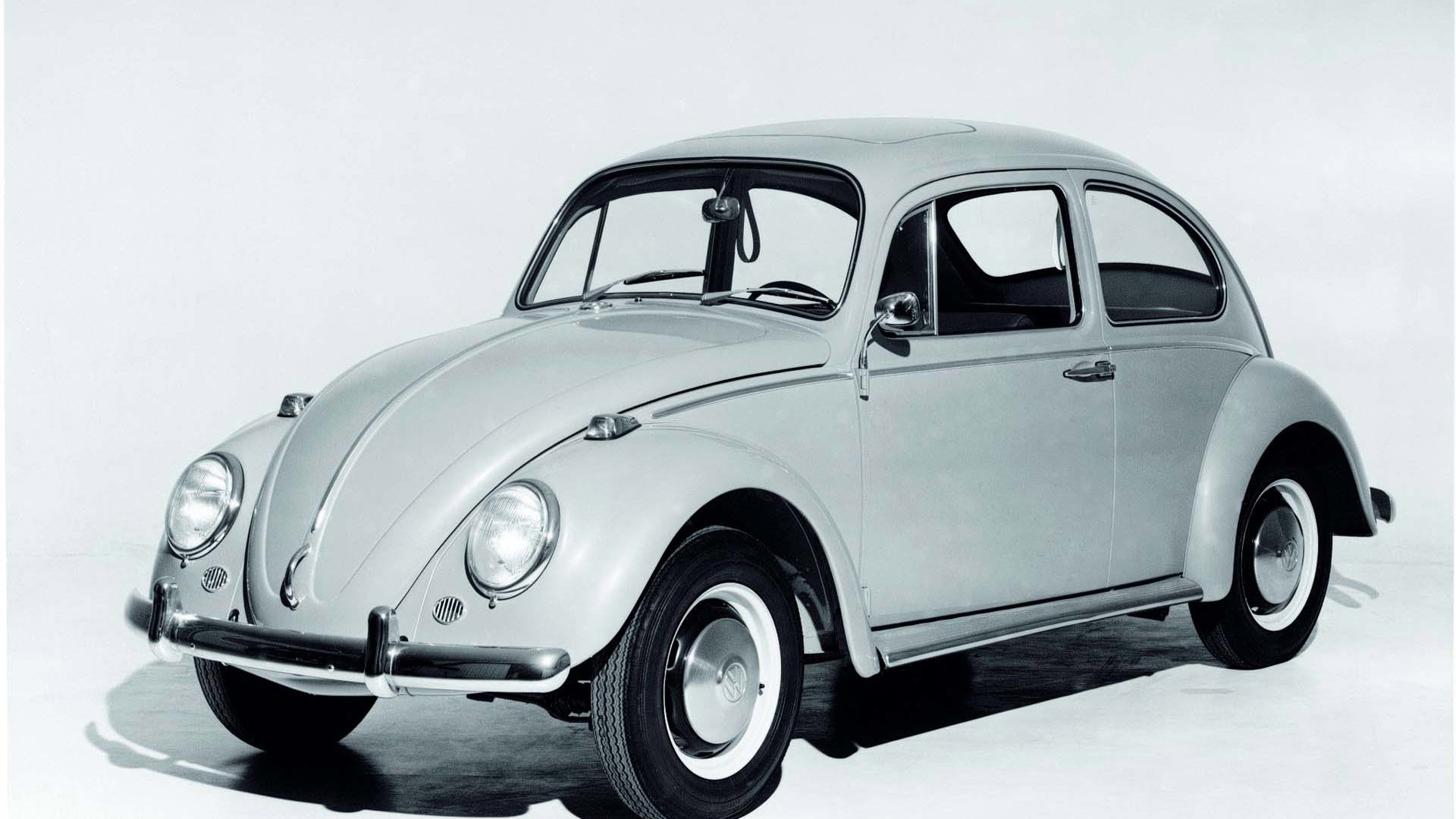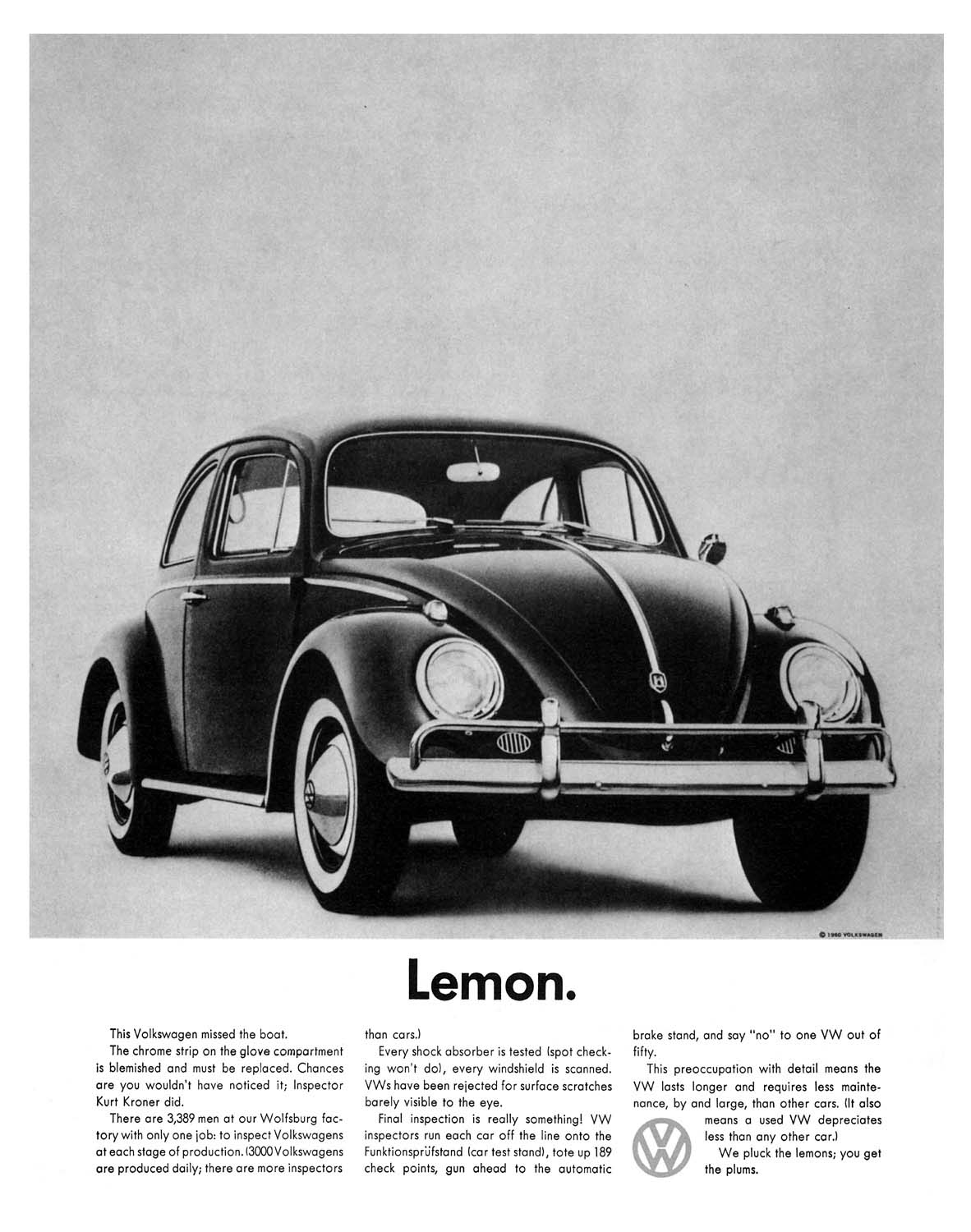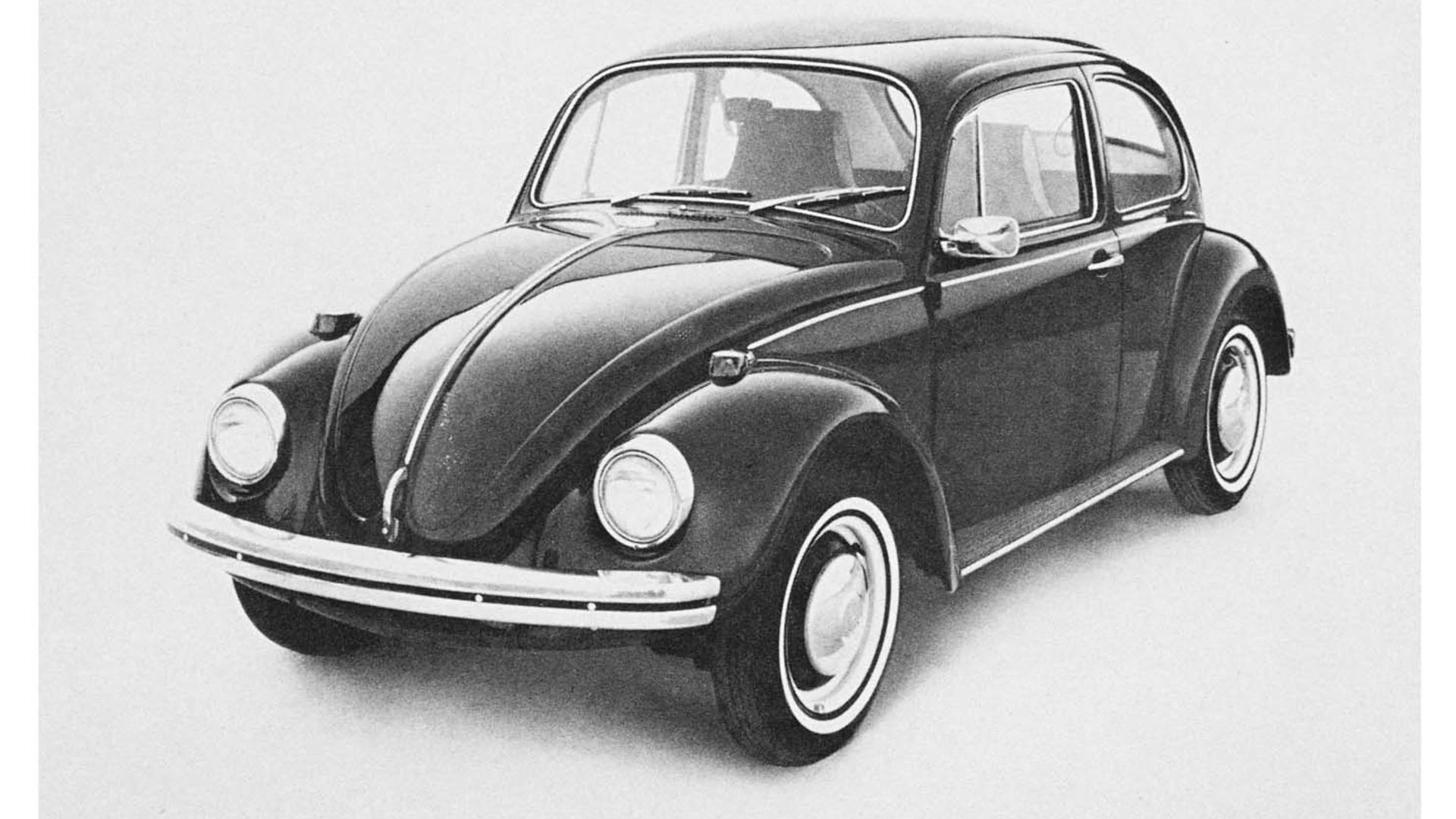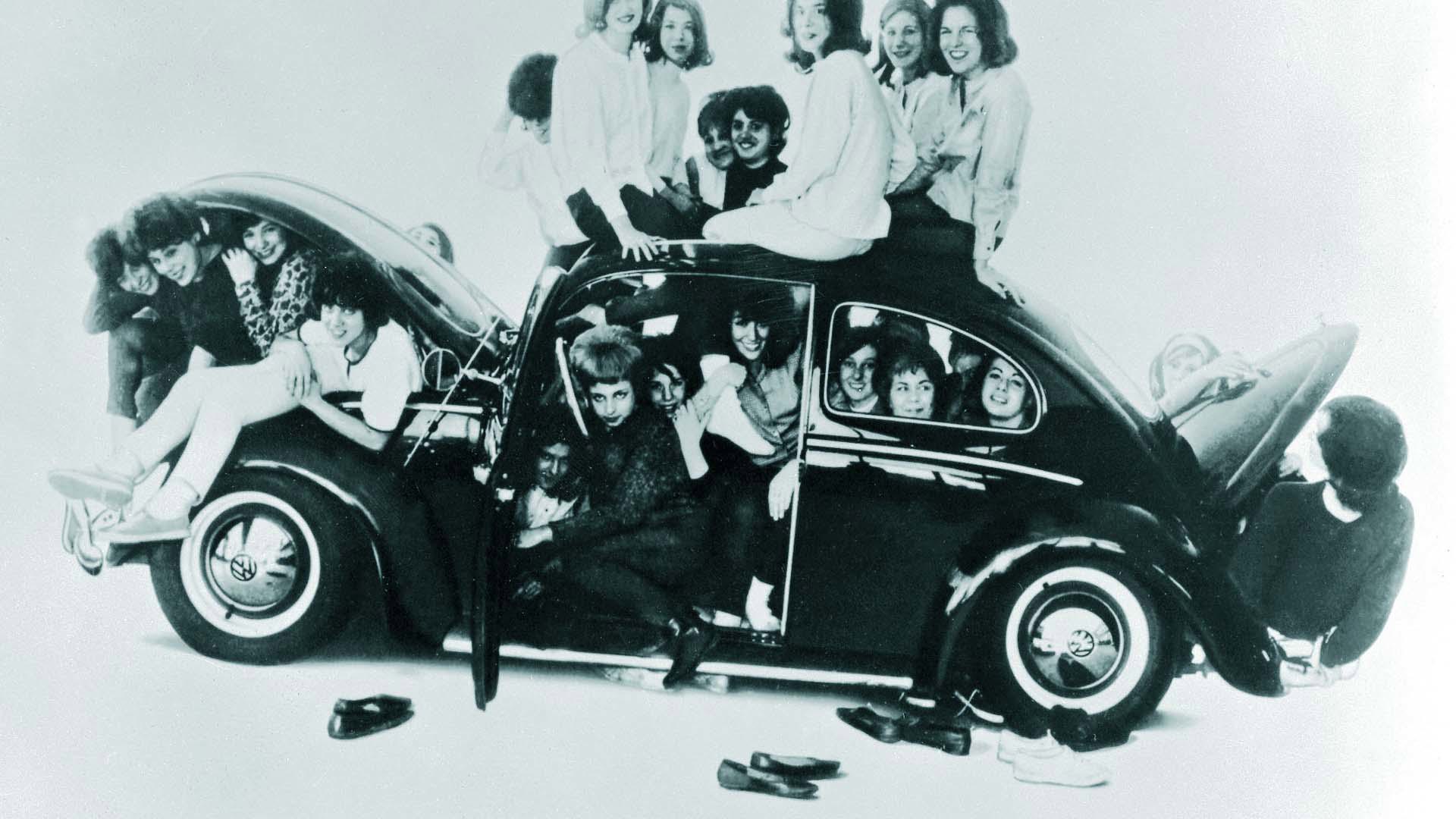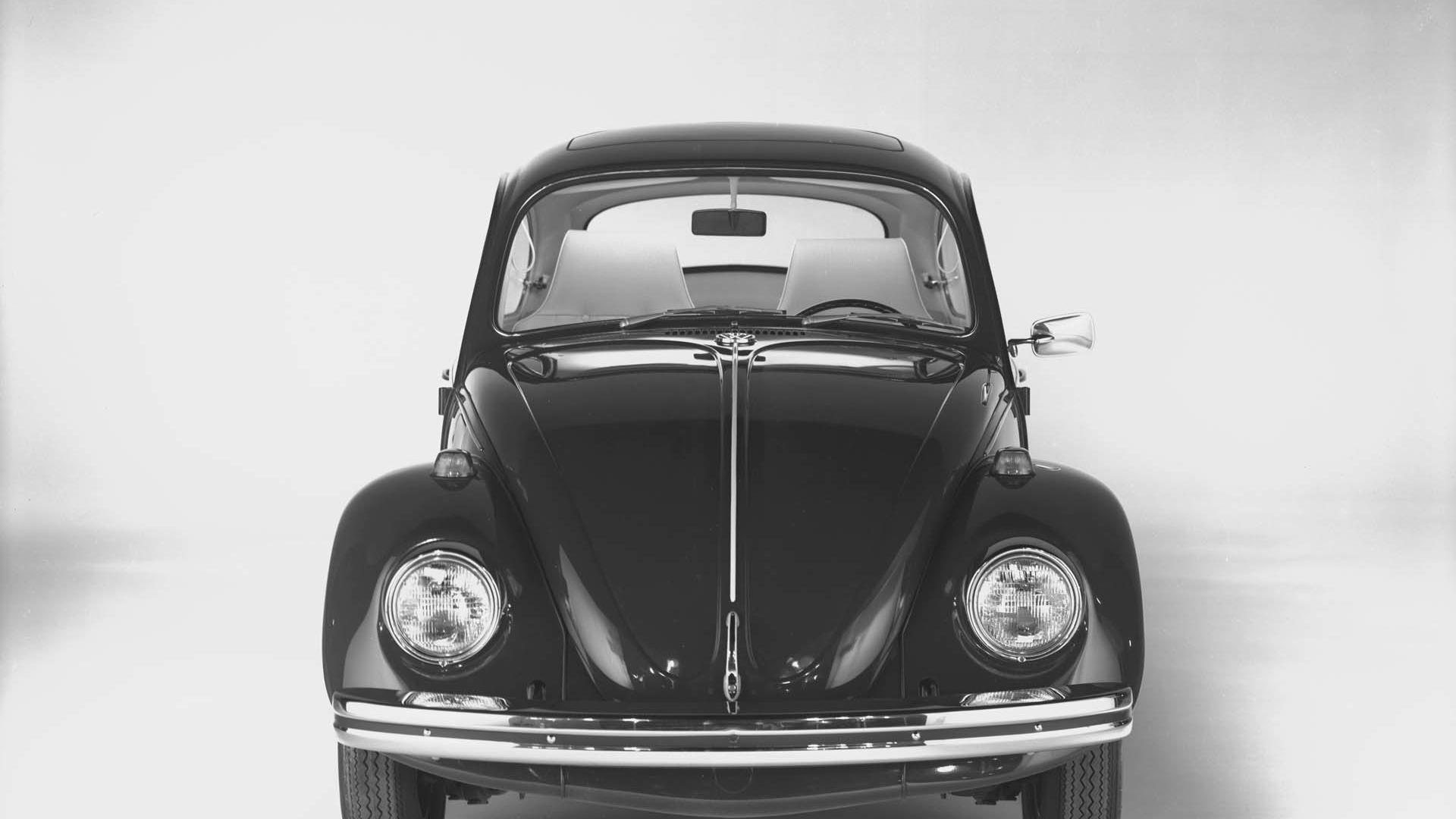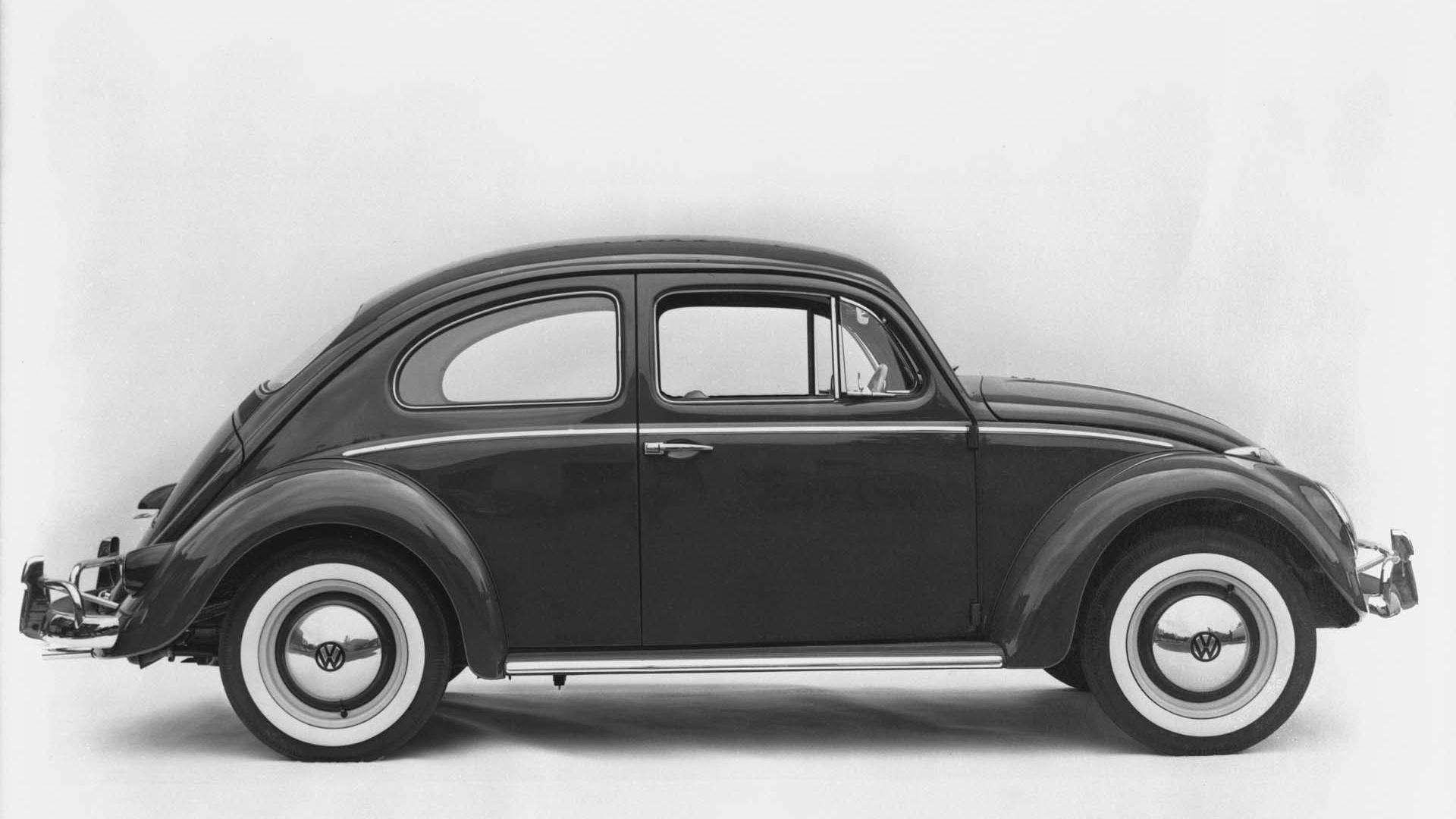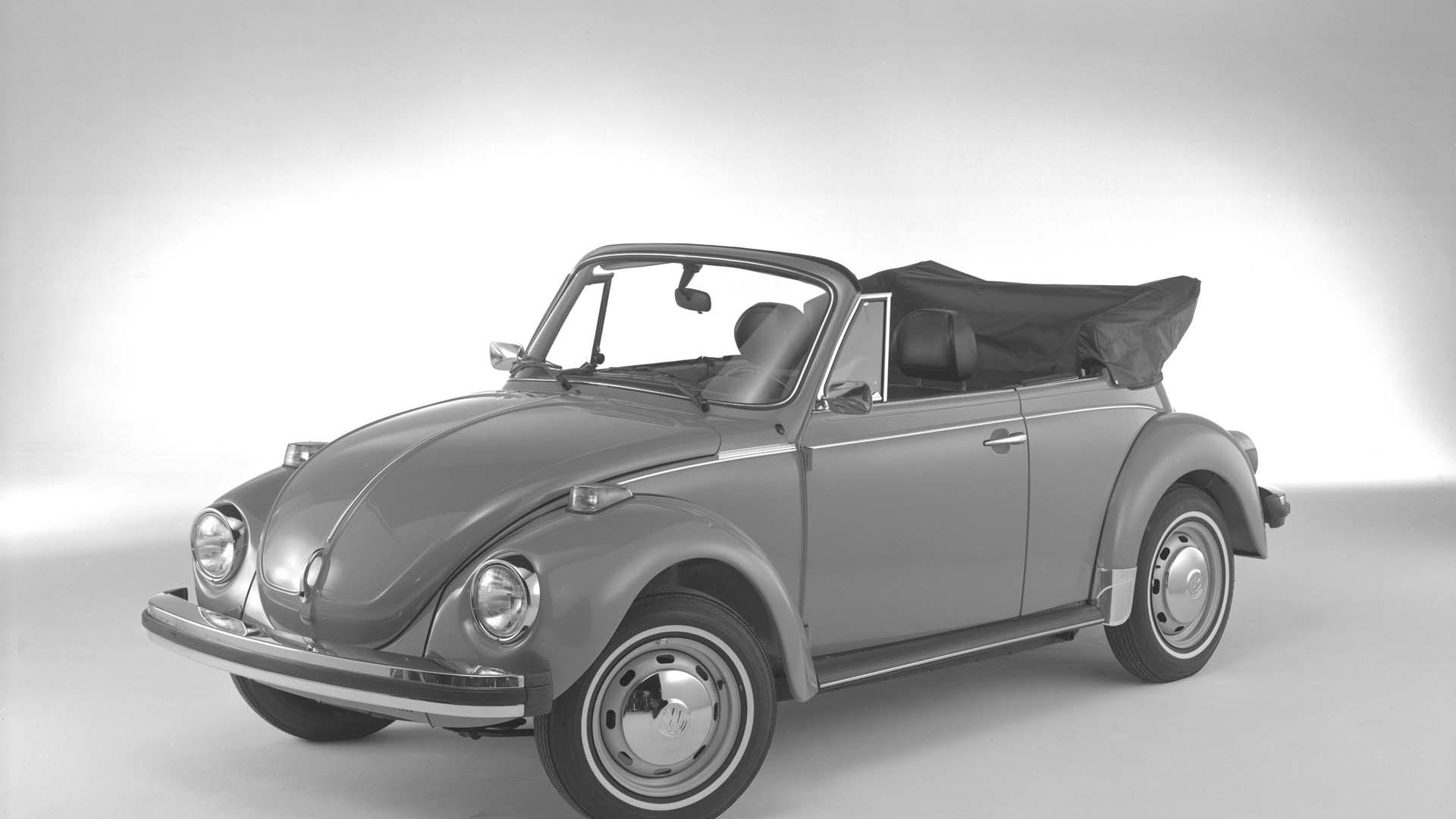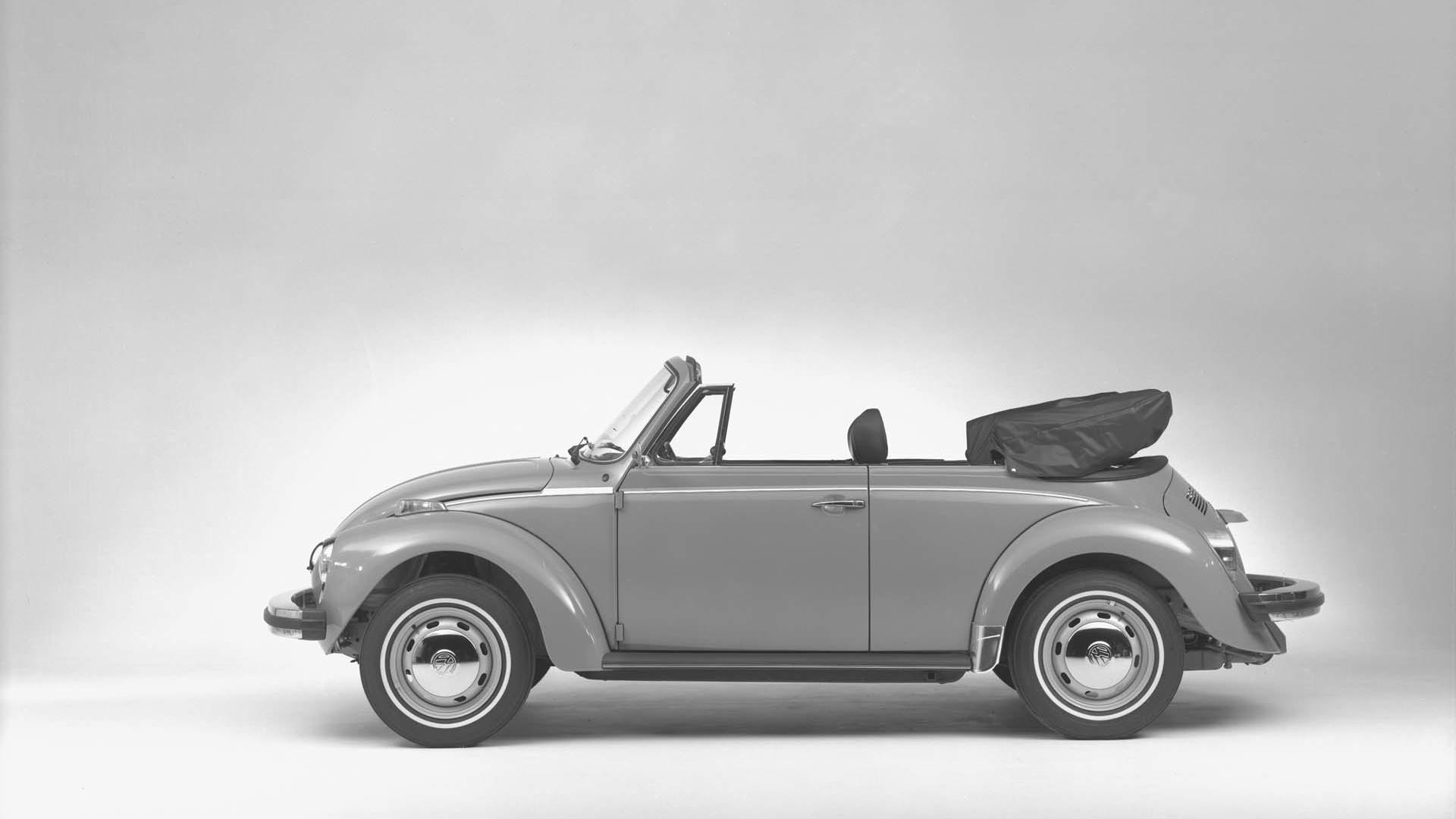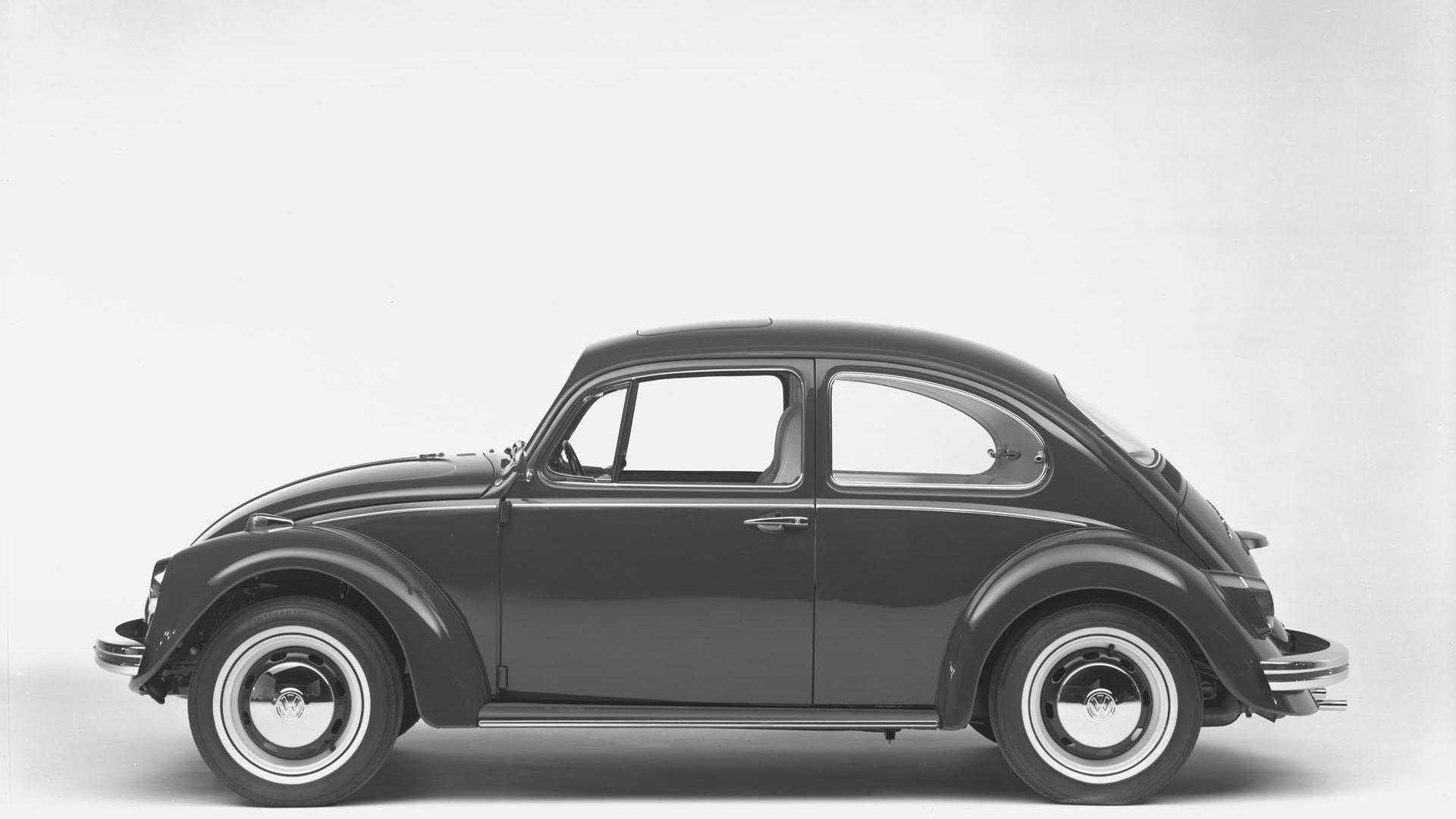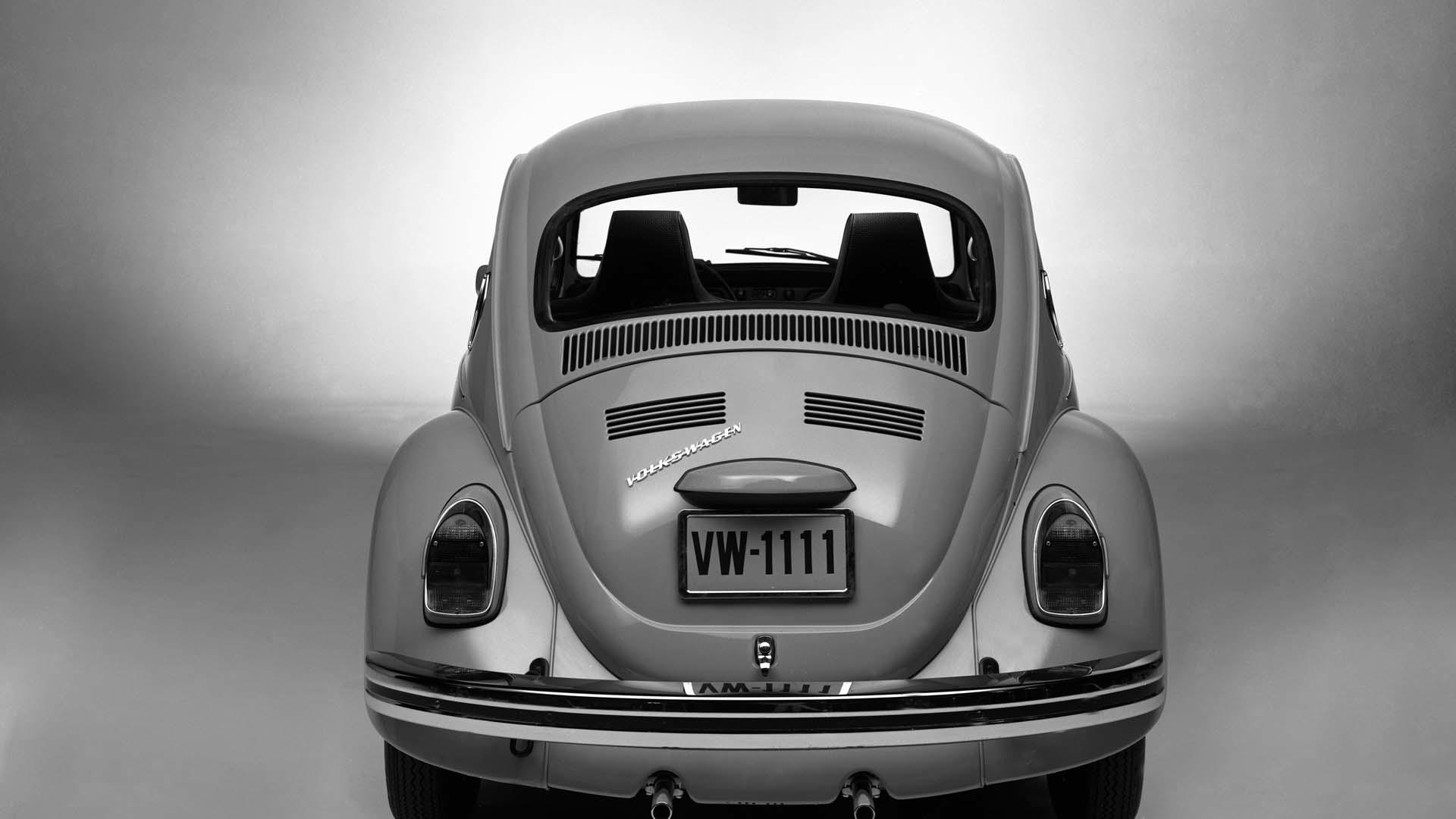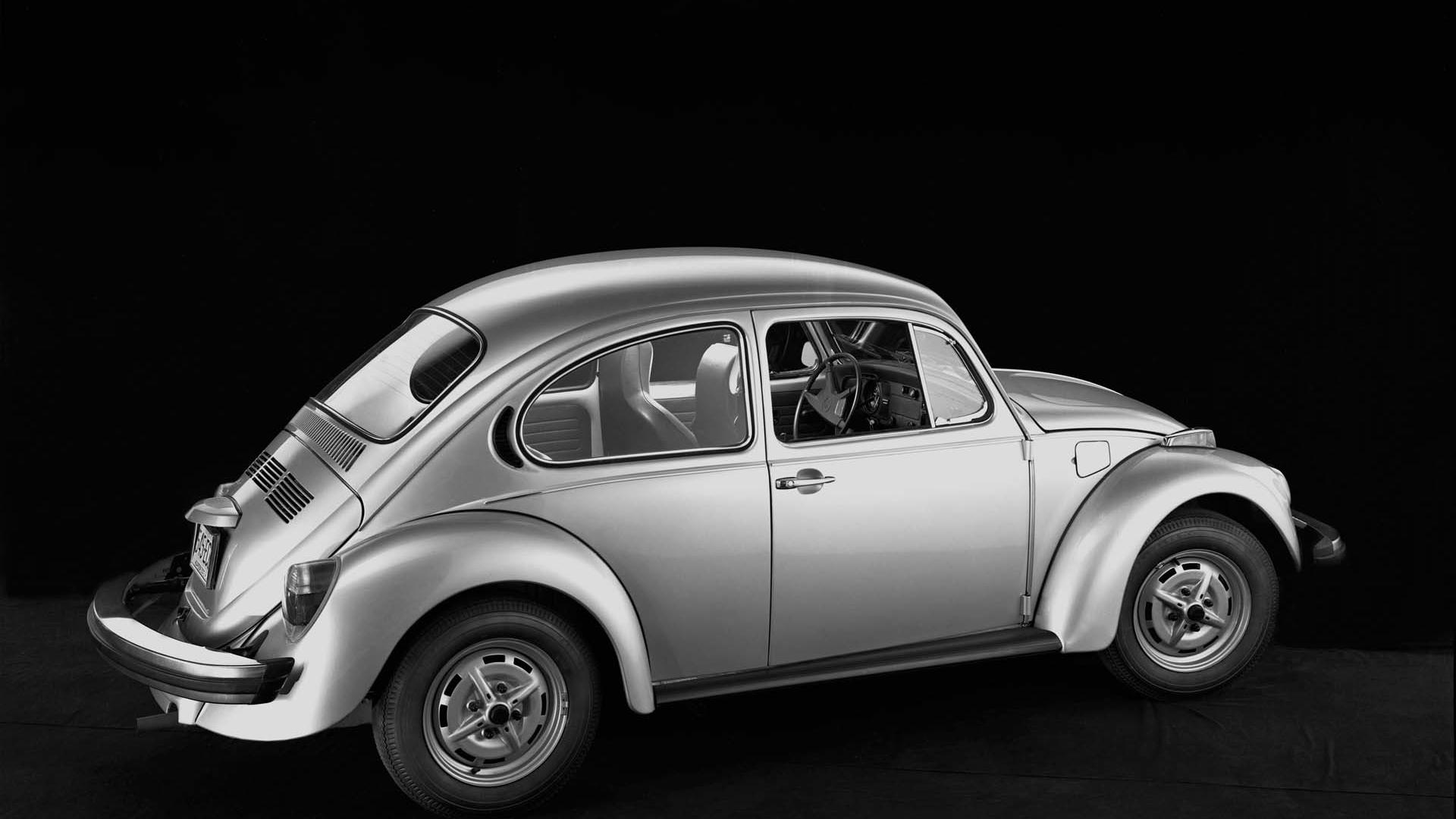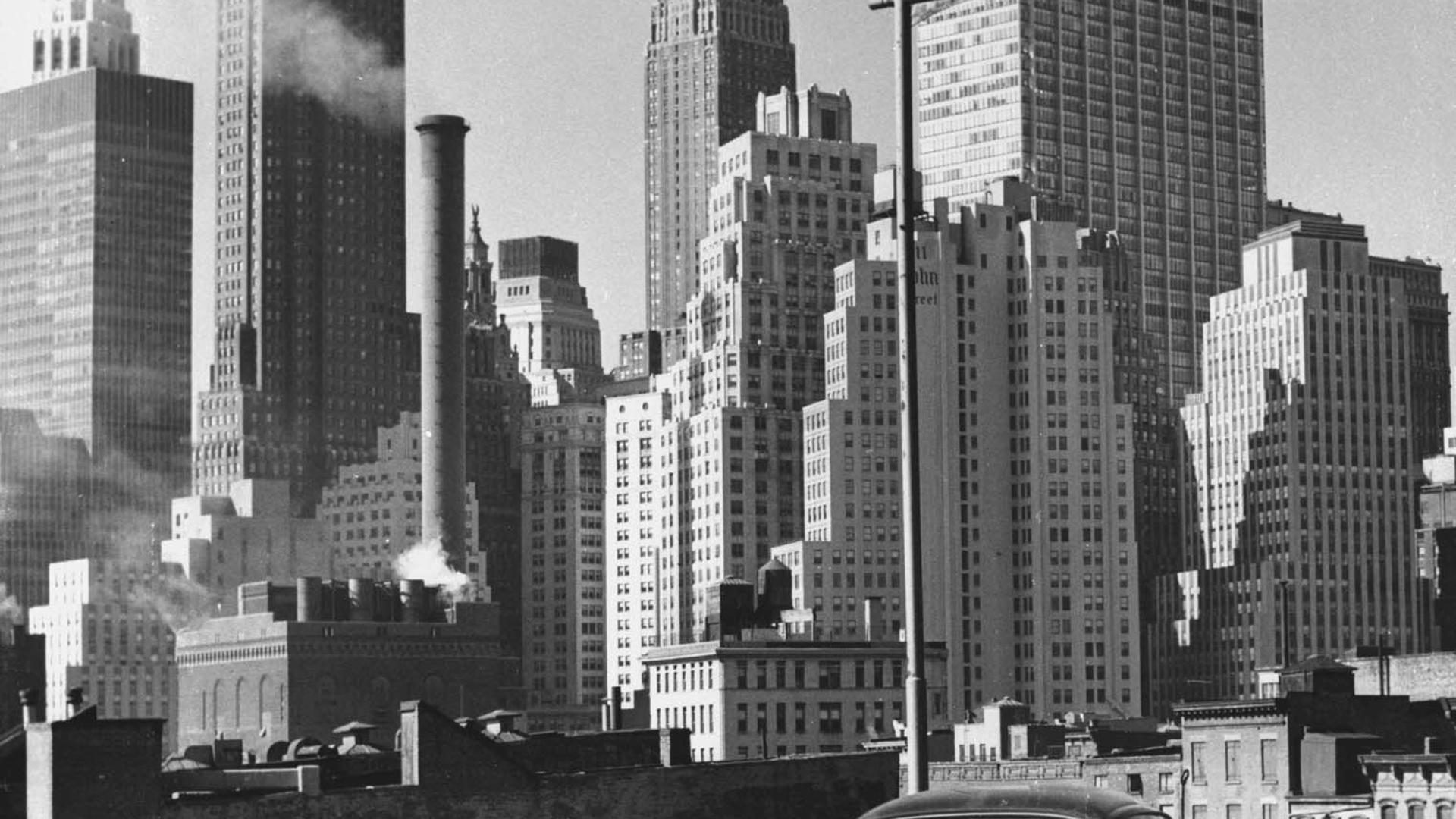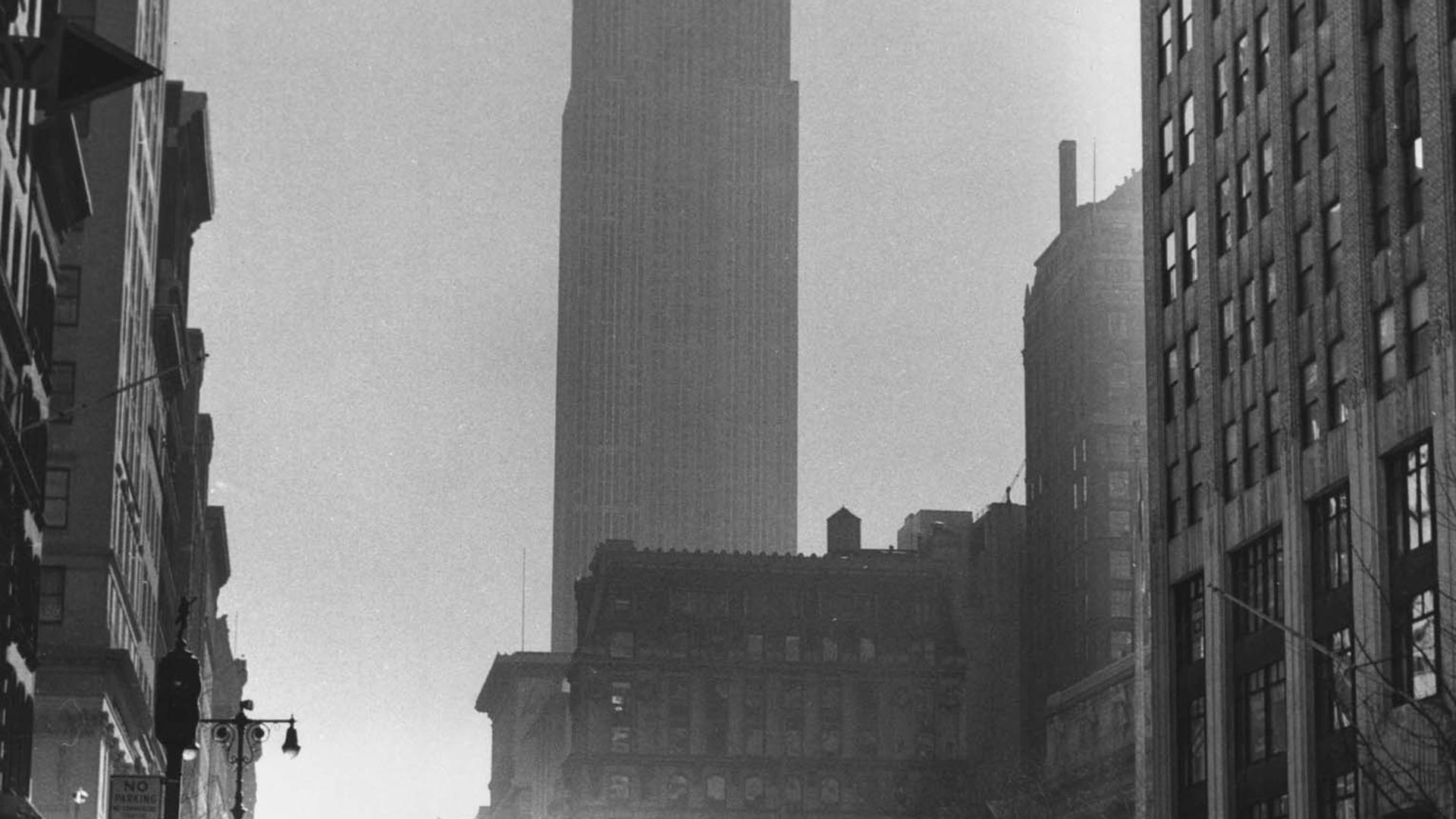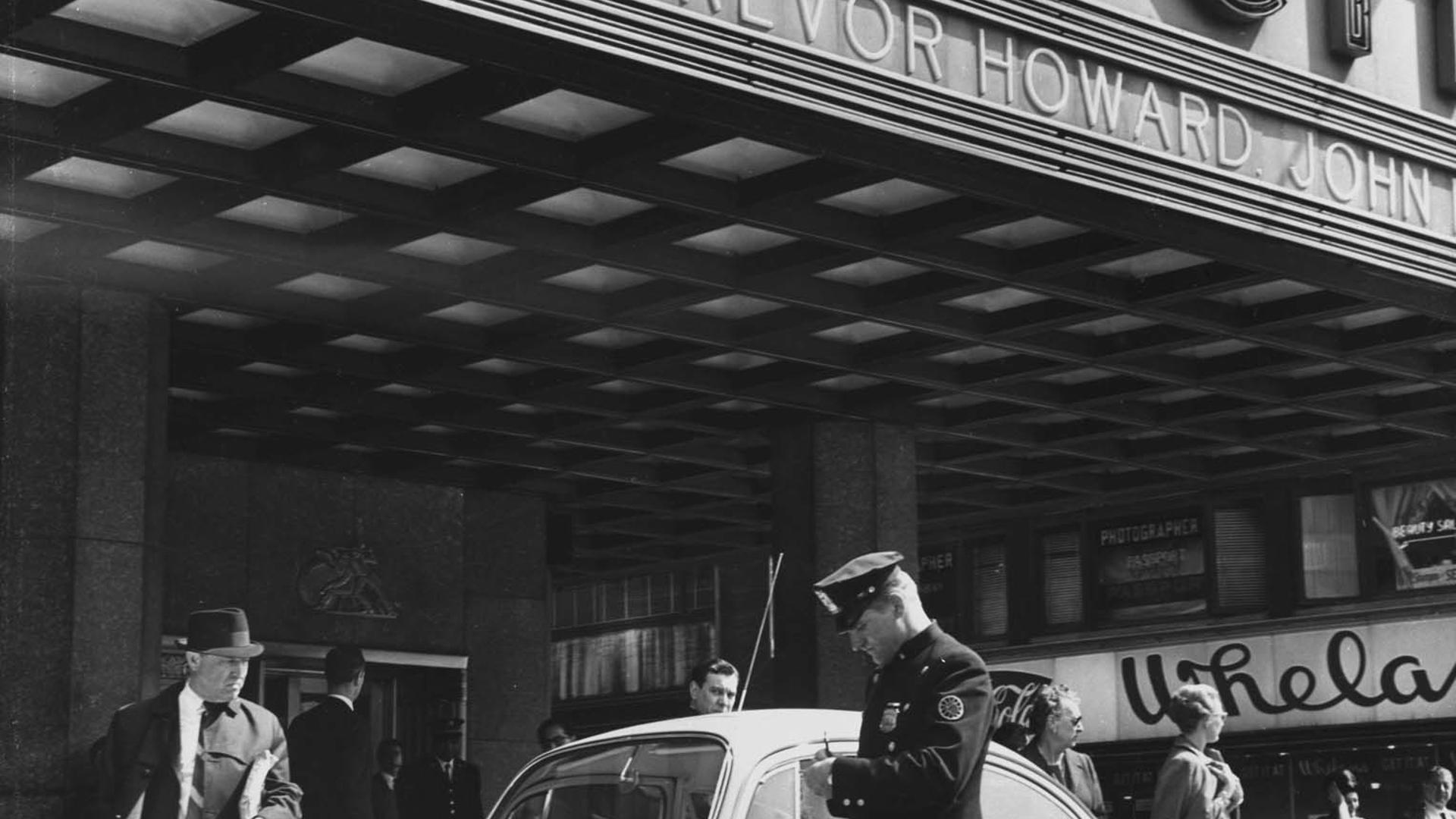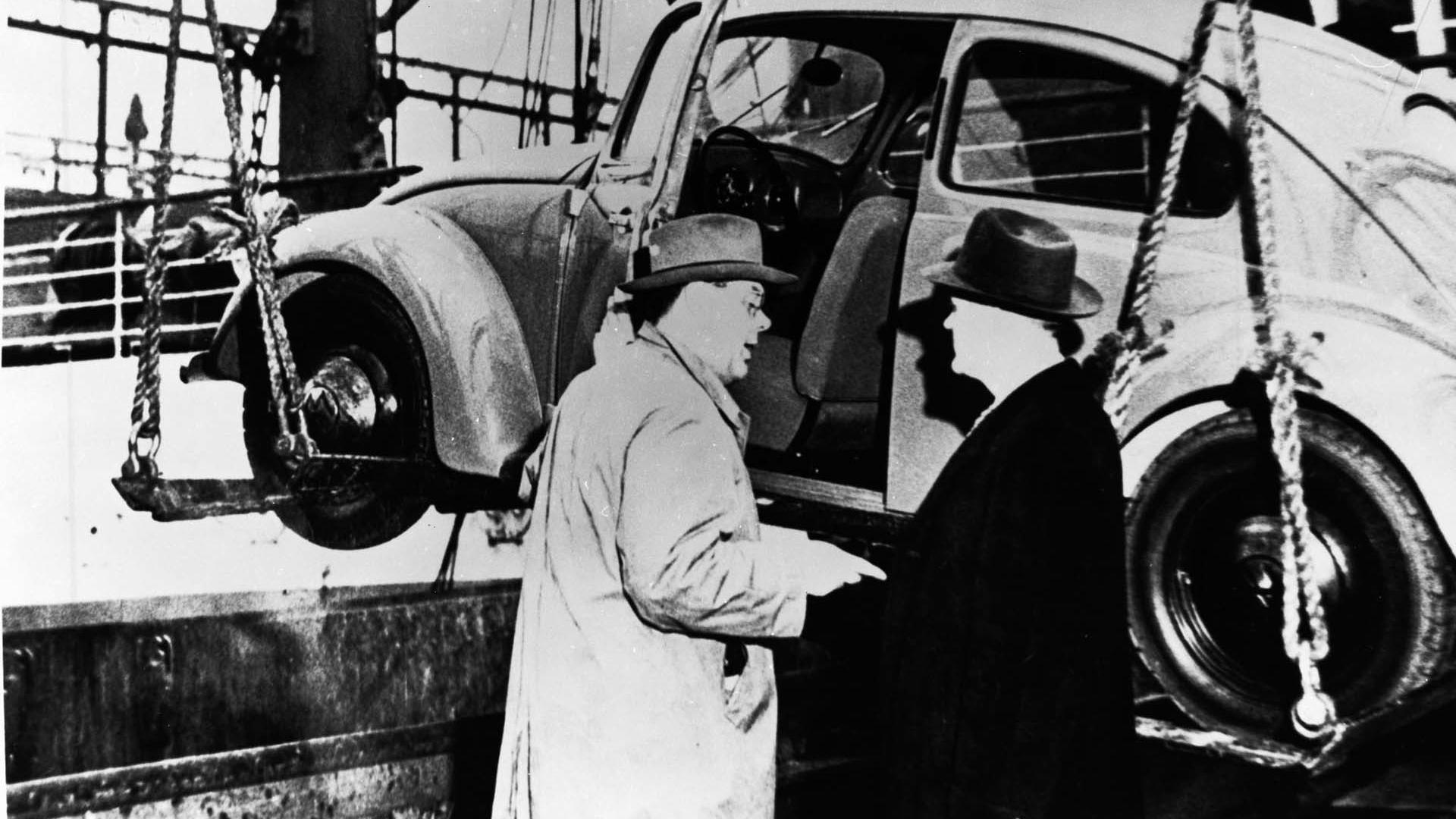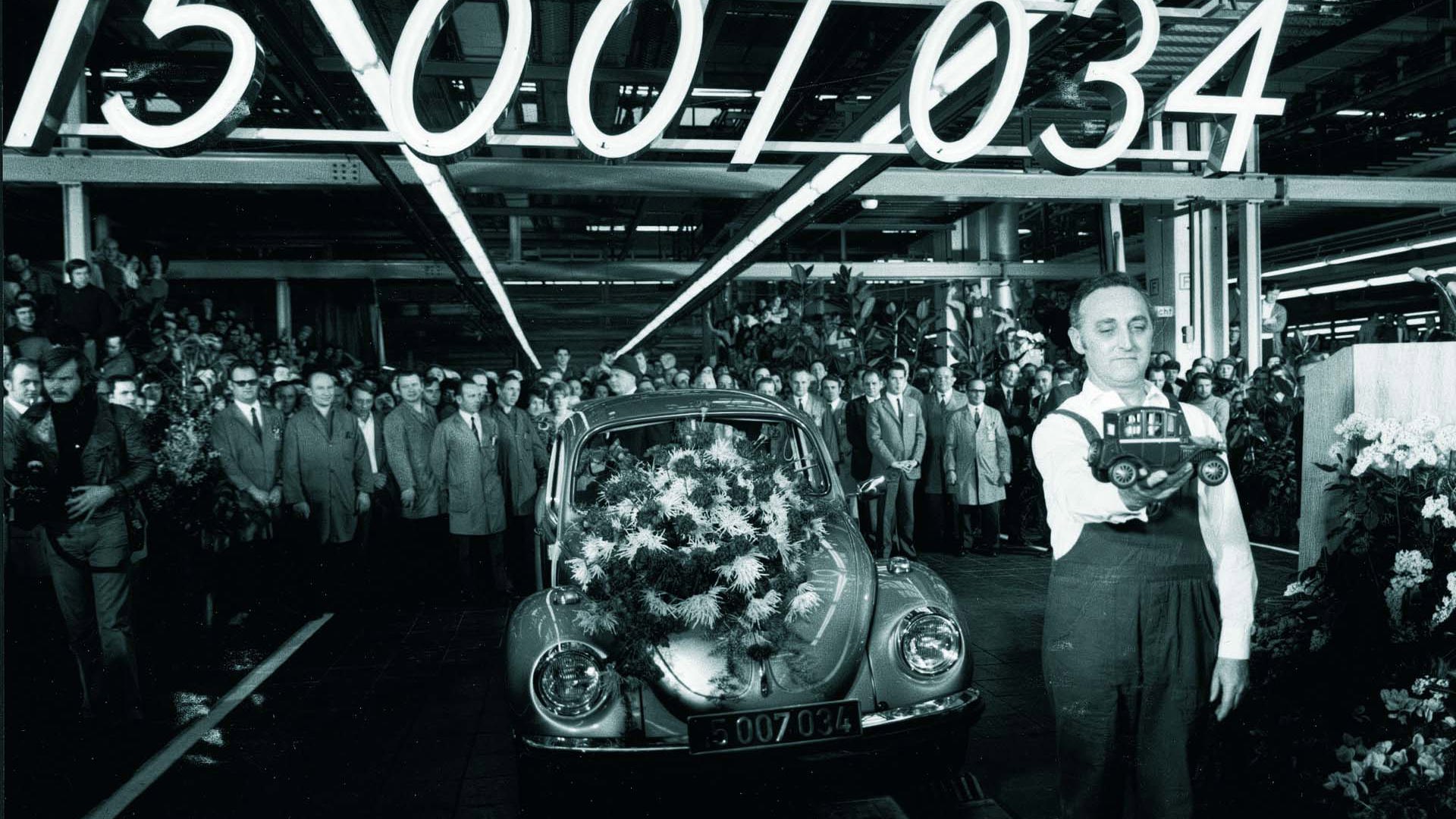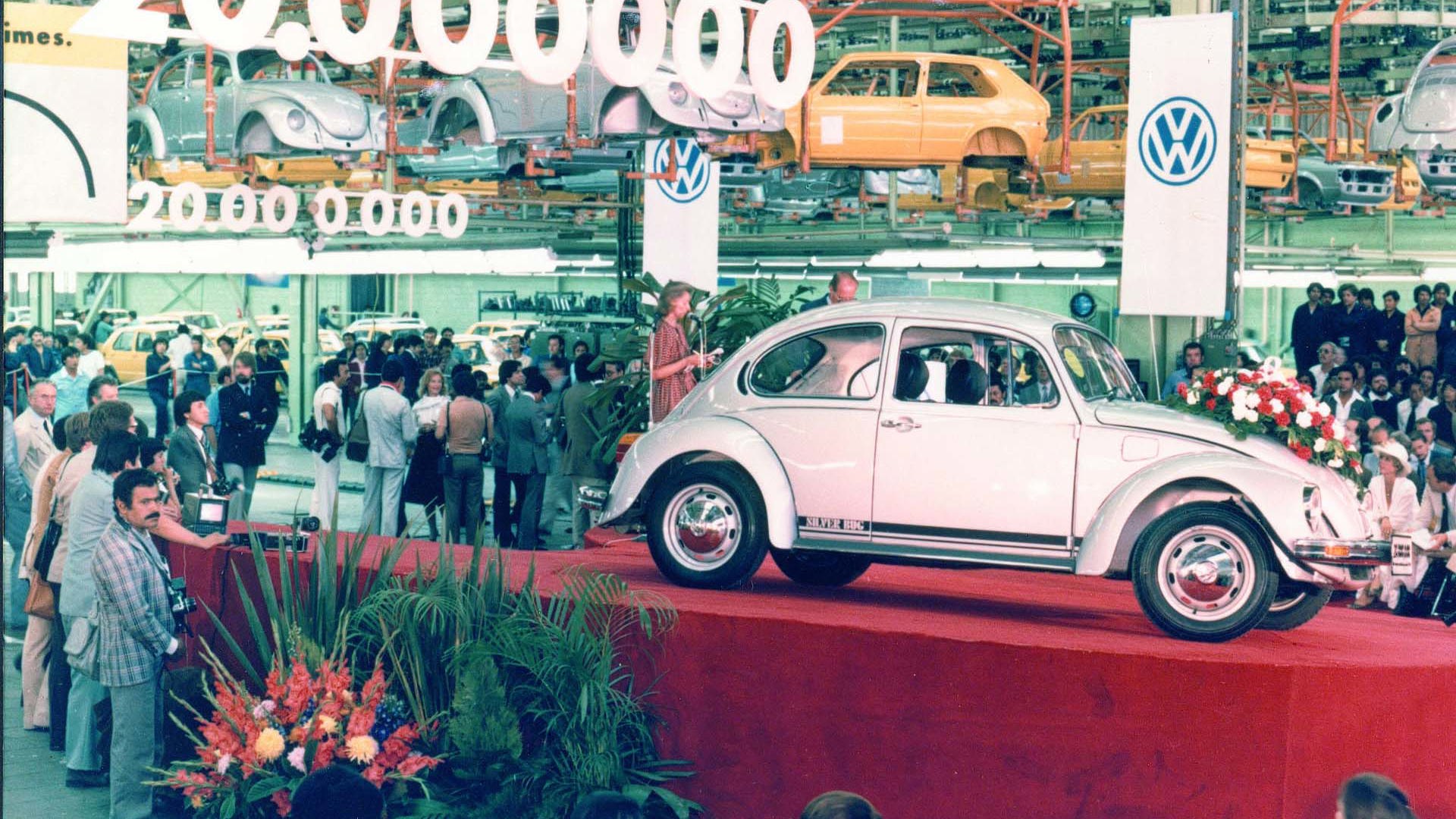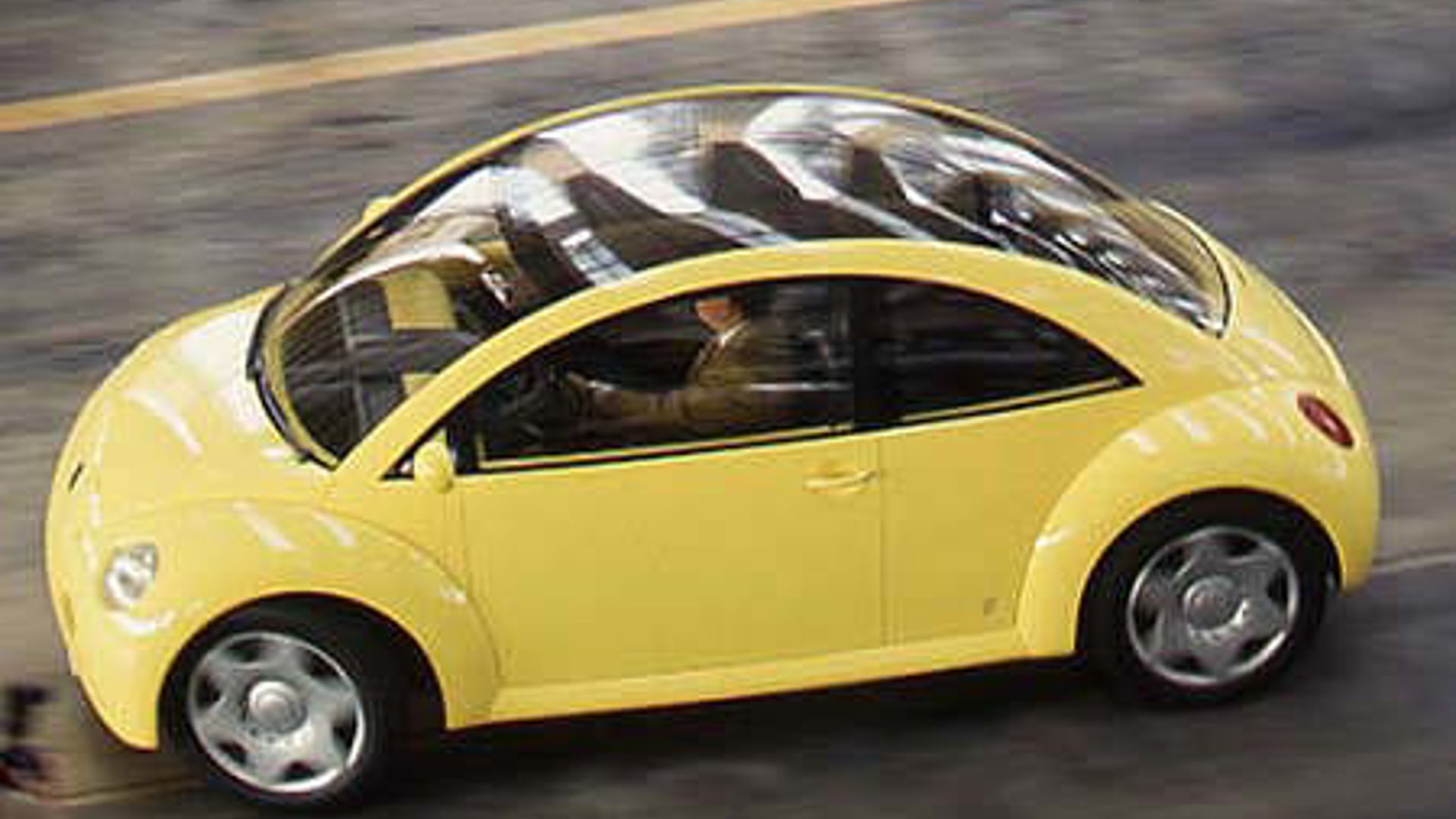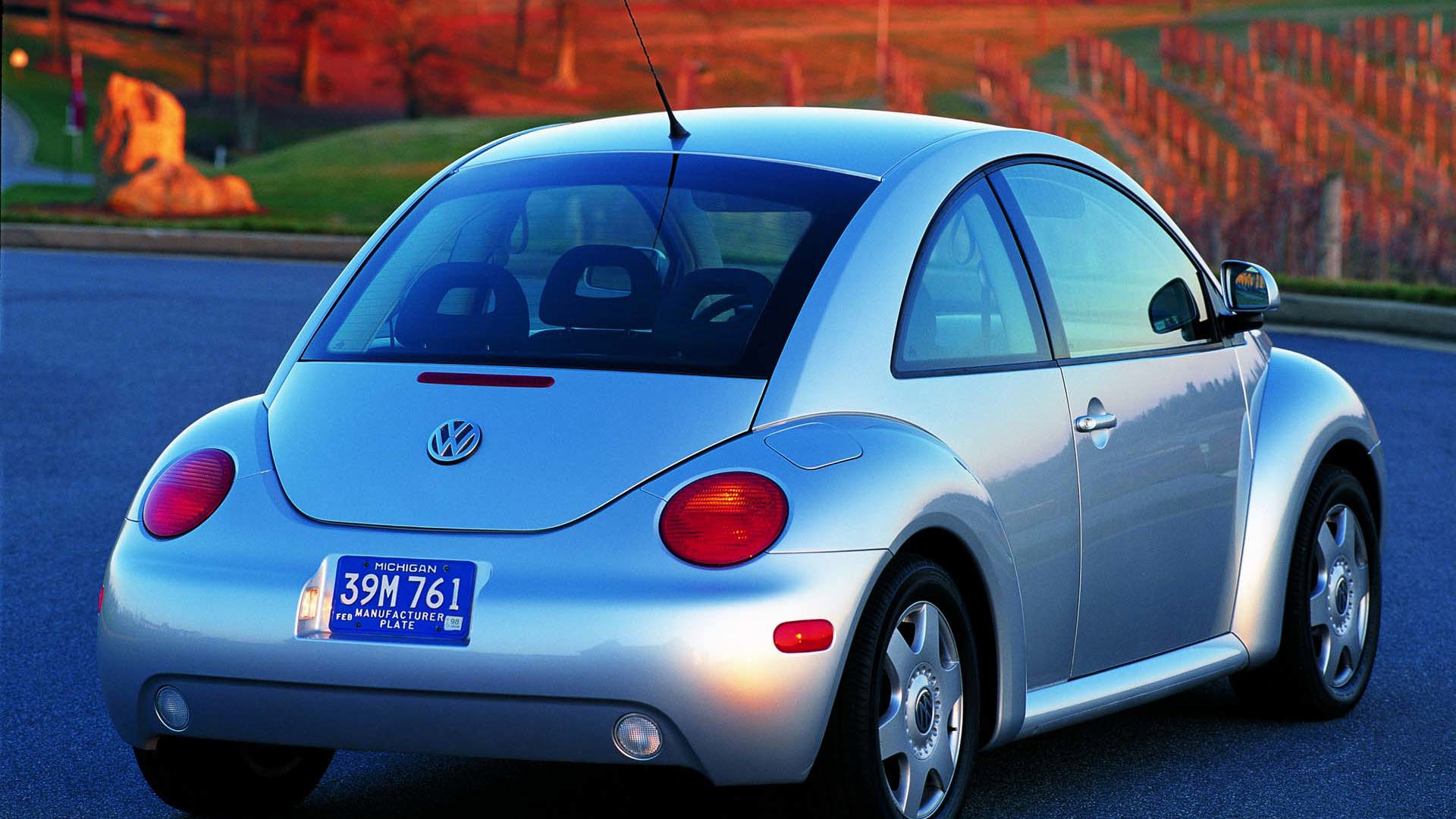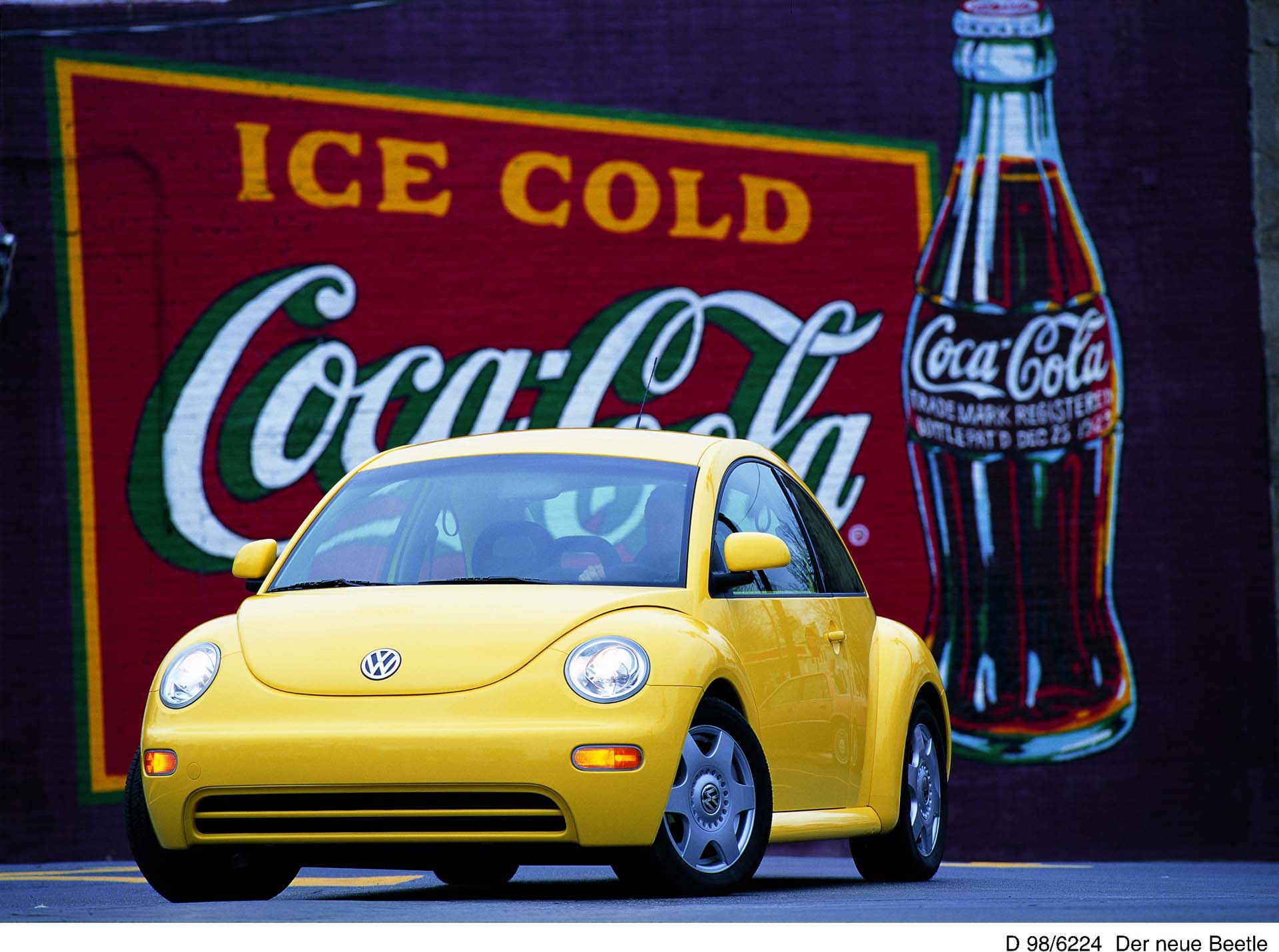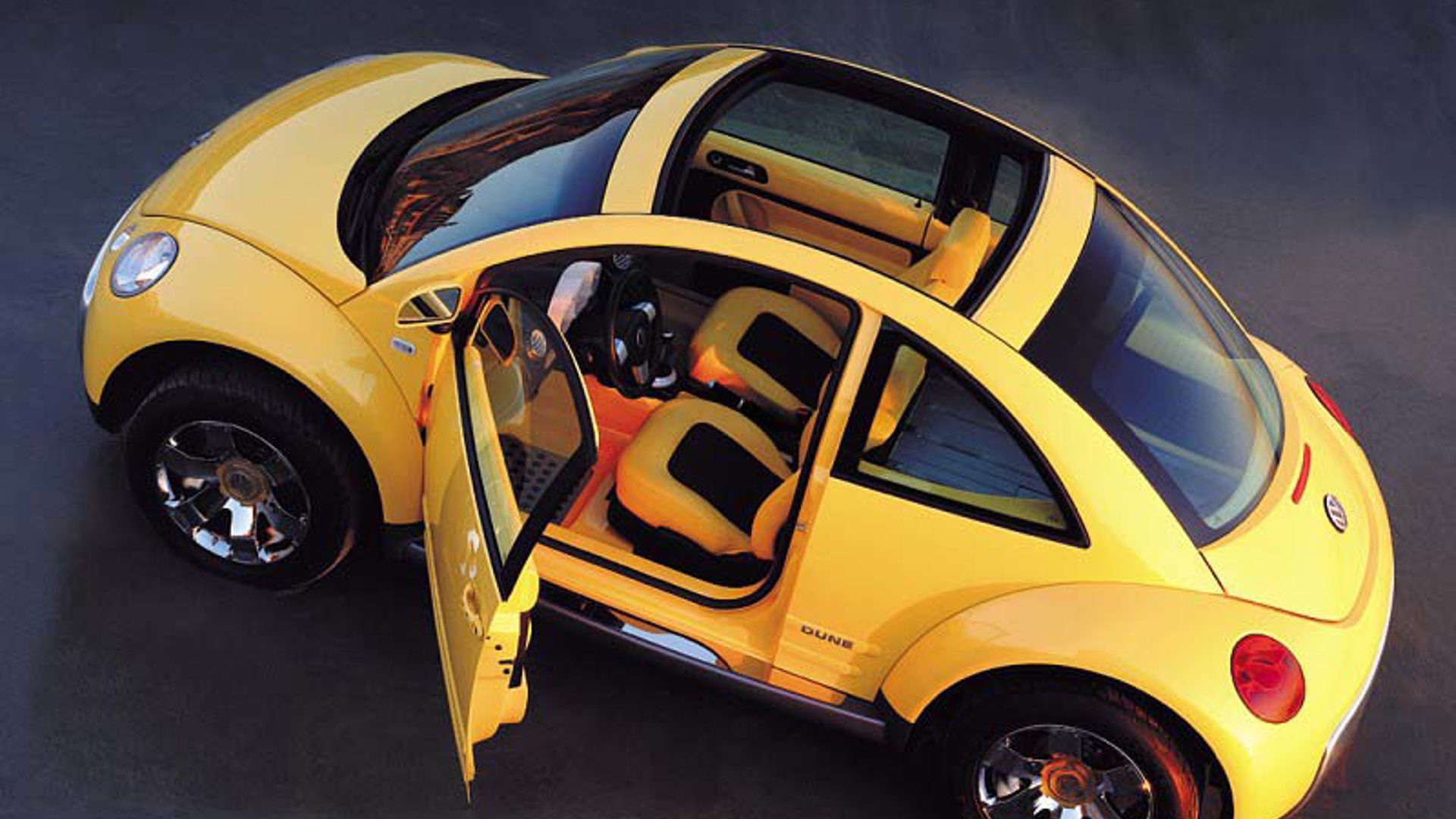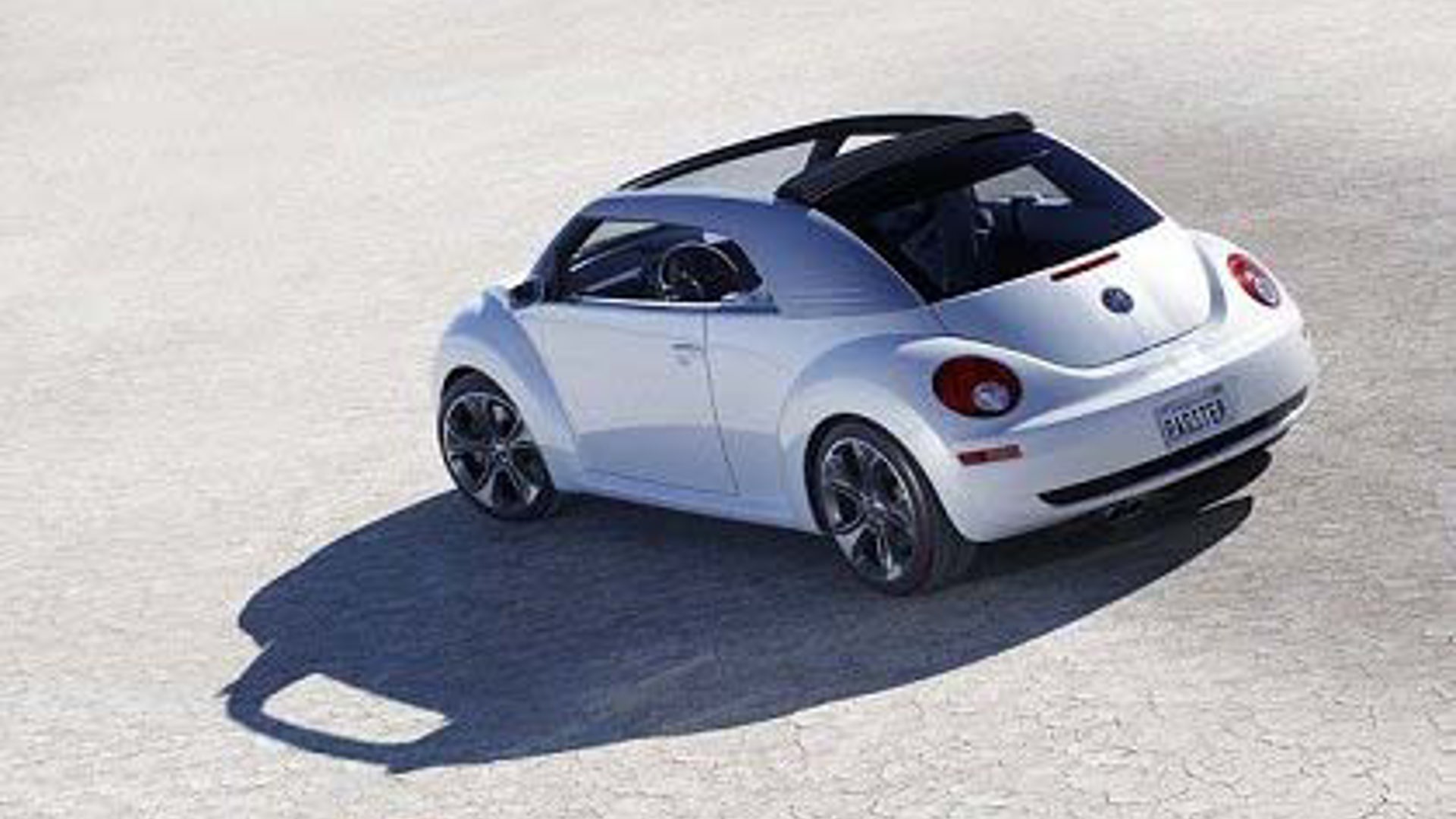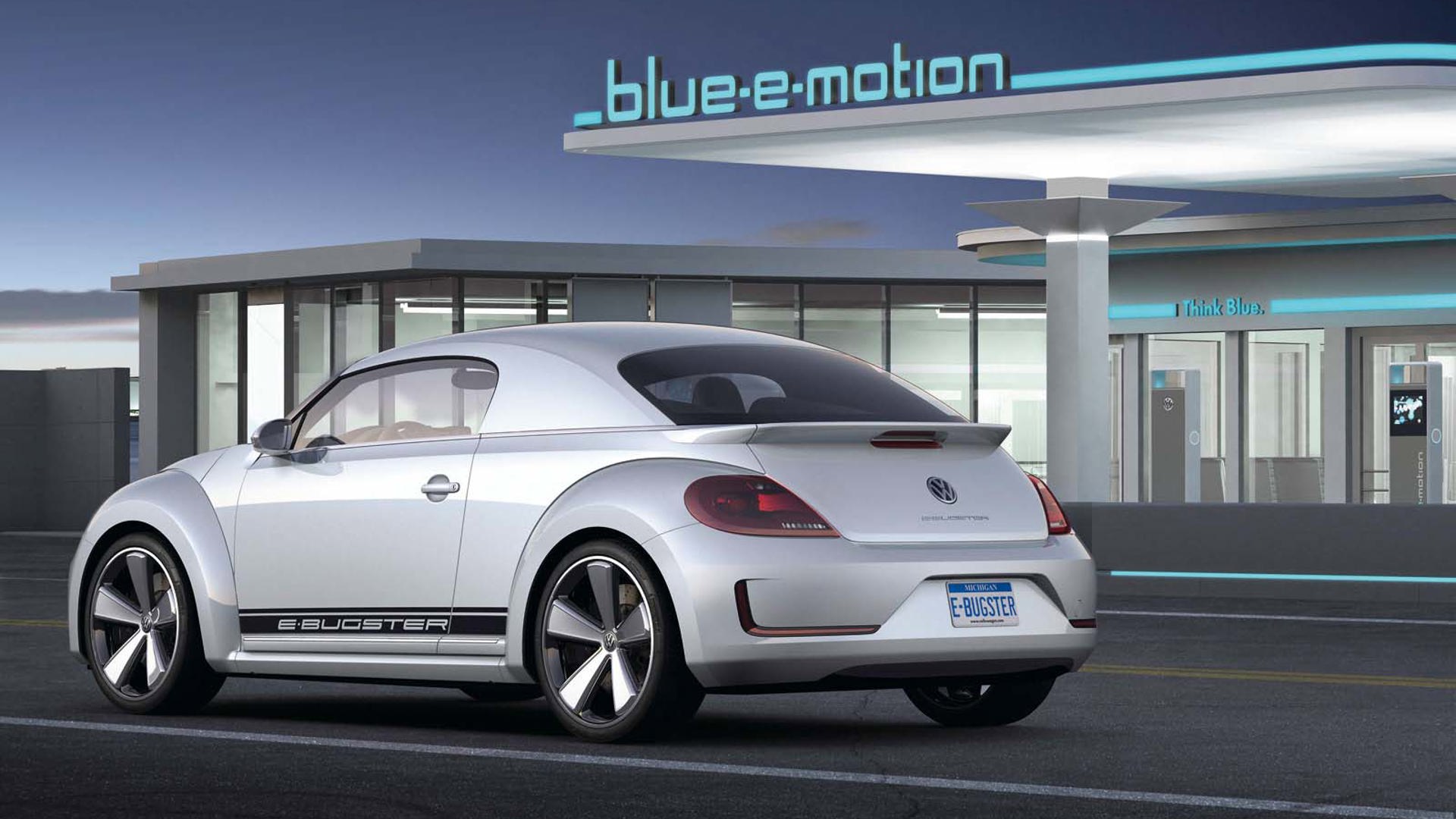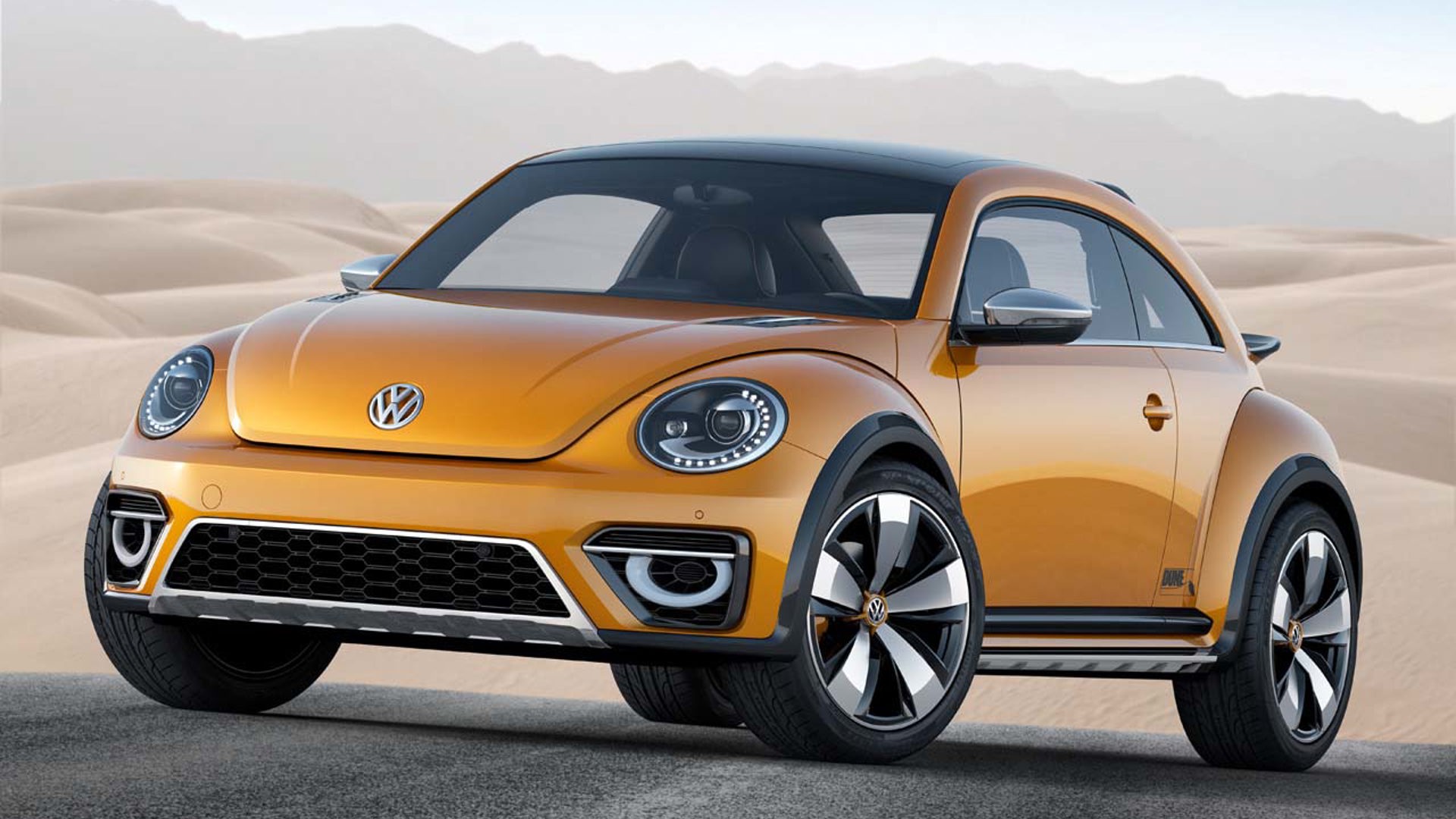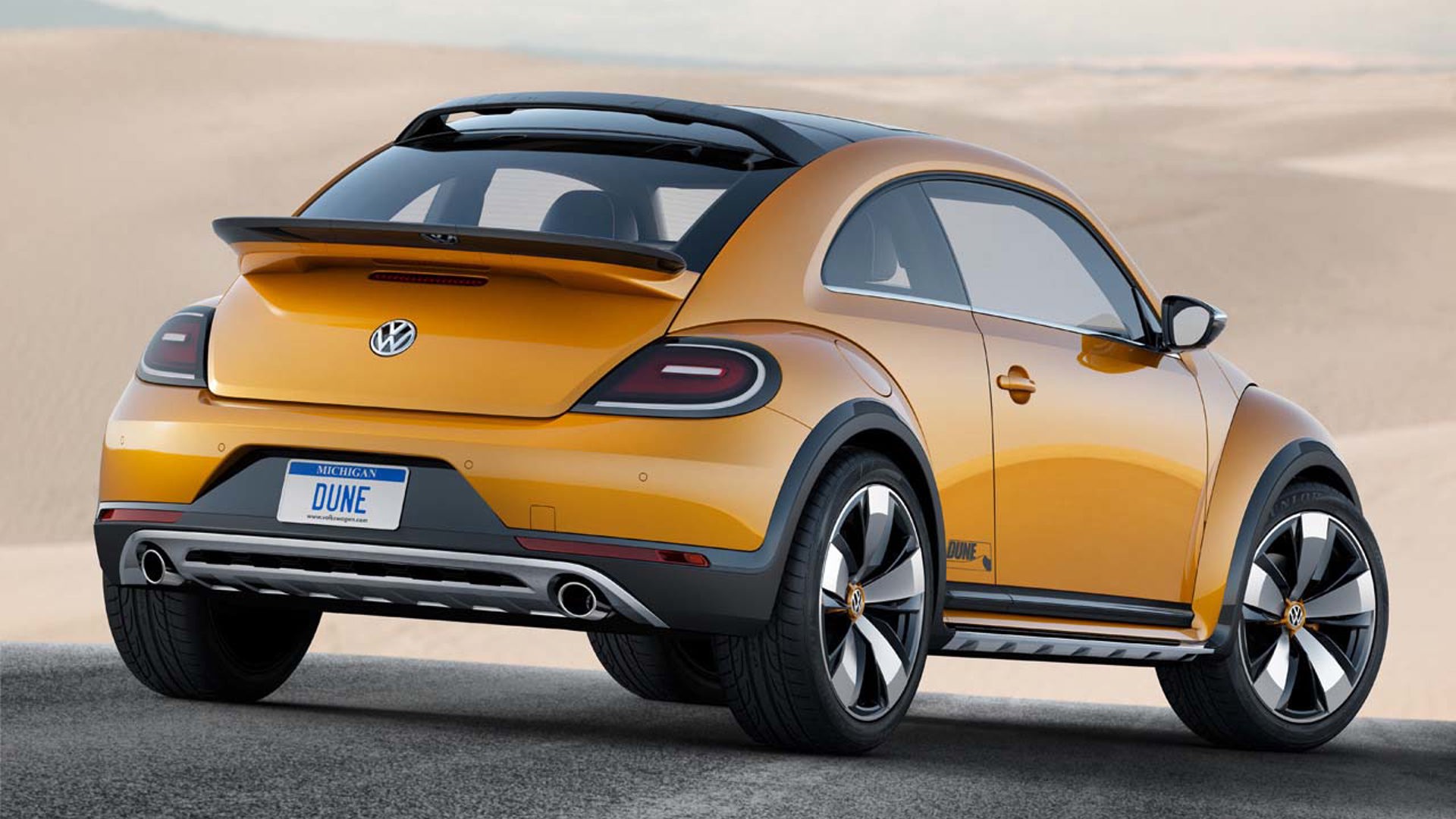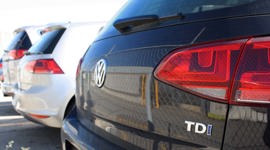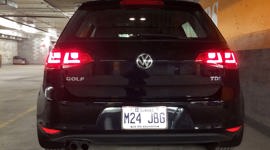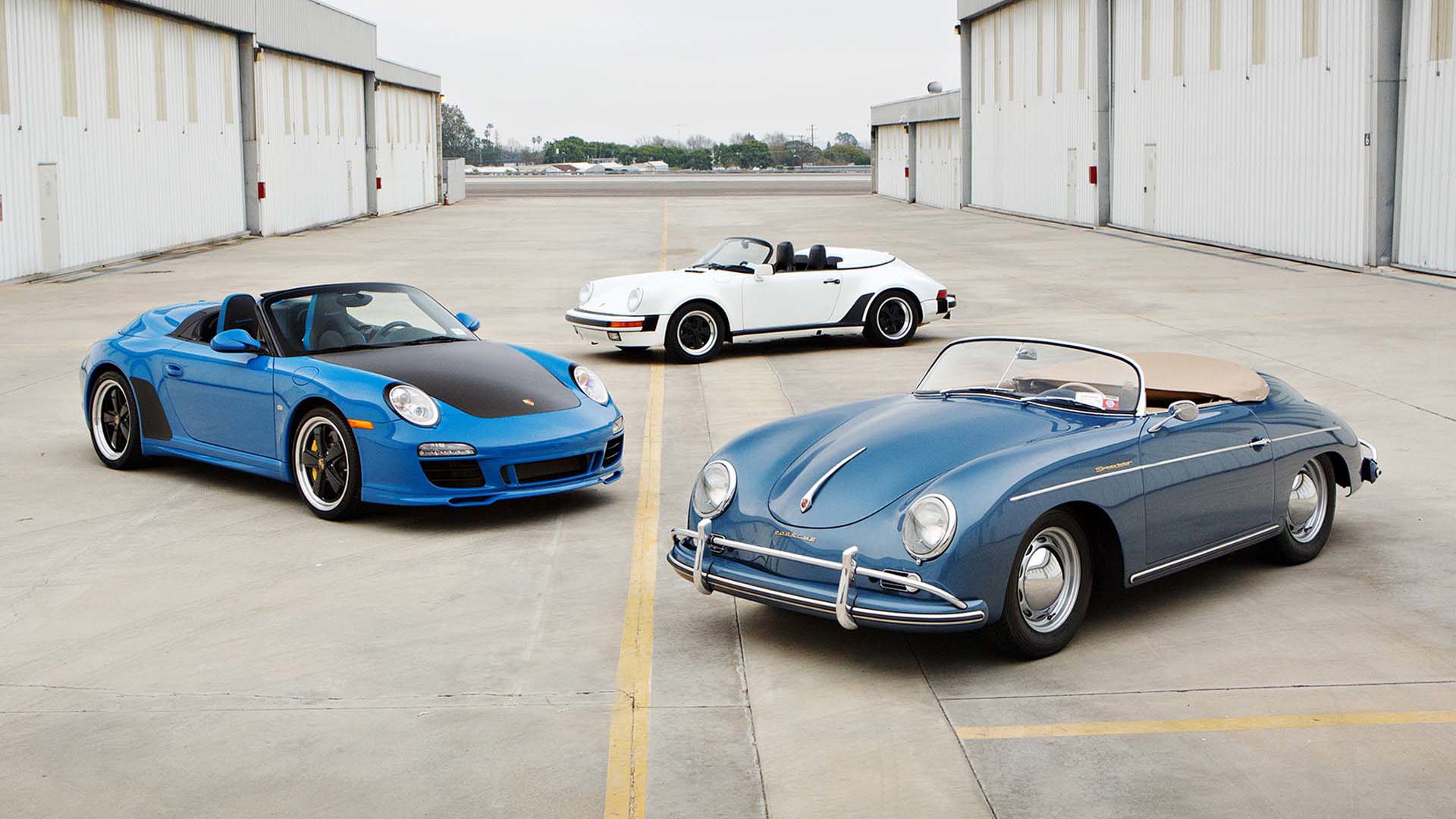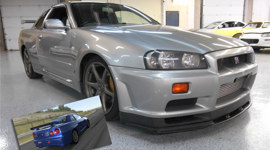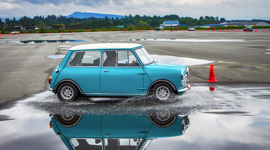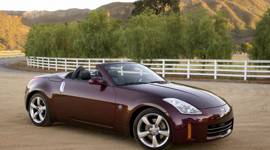Will Volkswagen's reputation overcome the lasting stain of the diesel scandal? Surely, this must be one of the worst skeletons in the closet for any car company to have. Actually... wait a minute.
Today, the Volkswagen Beetle is a fun little front-driver that you can order as a pink convertible. Its origins, however, are basically pure evil. Originally conceived as a propaganda tool for the Third Reich, the original people's car was built at the behest of Adolf Hitler, supreme leader of Germany and total jerk. Hitler pretended to want his new Autobahns filled with shiny happy citizens motoring along, while meanwhile he plotted all-out war in Europe – and worse.
The brief for a people's car was given to Ferdinand Porsche, engineering genius and perhaps not the best judge of character. Having seriously considered an offer to work for Josef Stalin as general director for the Soviet automotive industry, Porsche instead decided to have a stab at putting Germany on wheels. He put forth the best design when Hitler's call for a small car went out, and was given the contract to build it. Hitler's demands were a top speed of at least 100 km/h, space for two adults and three children, and fuel consumption below 7.0 L/100 km.
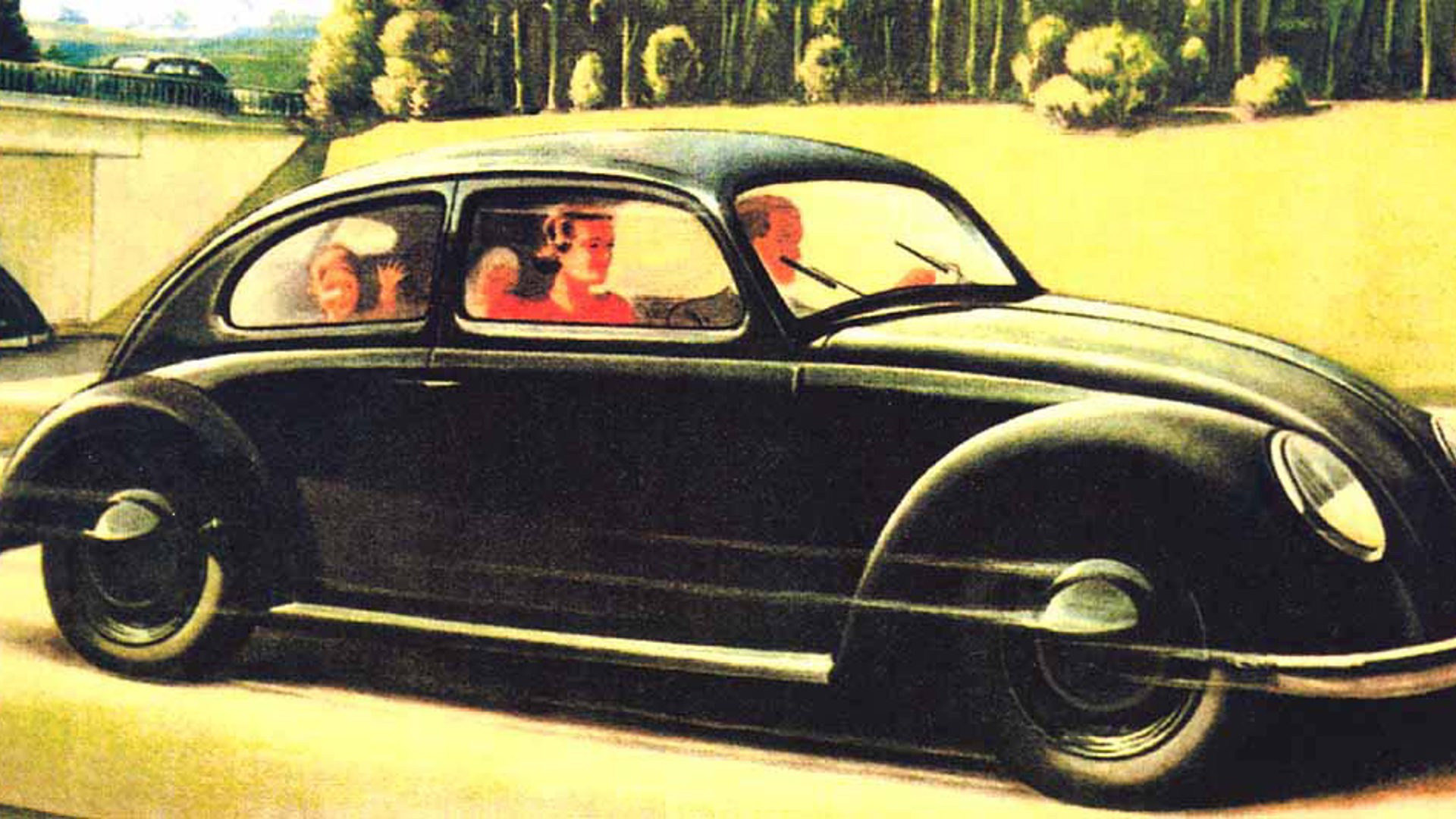
But was Porsche's design an original, or a copy? Most of the main elements of the Beetle can actually be found in the work of Jewish engineer Josef Ganz. Ganz's prototype car, called the May Bug, looks so much like the eventual beetle-shaped car we got, it's not hard to make the case that Ferdinand lifted a few ideas. Unfortunately for Ganz, and also for Czech car maker Tatra – whom Porsche admitted copying – the might of the German Reich simply steamrollered over them. Ganz was arrested by the Gestapo, and Tatra had to drop their lawsuit against Porsche when Germany invaded Czechoslovakia.
Porsche took four years to finalize the Beetle's design, going through several prototypes before settling on the familiar flat-four engine (they even tried a five-cylinder radial at one point). A huge new factory was built near the Wolfsburg castle in central Germany. The town would eventually take its name from the castle after the war, and VW regularly releases special-edition Wolfsburg models of the Golf and Jetta.
These first Volkswagens were to be bought by workers putting aside money into a special savings account. The car was to be priced about the same as a motorcycle, and when the war ended, the money put aside for these cars was found in its original account. Propaganda tool or not, the Volkswagen really was intended to be part of a motoring Germany.
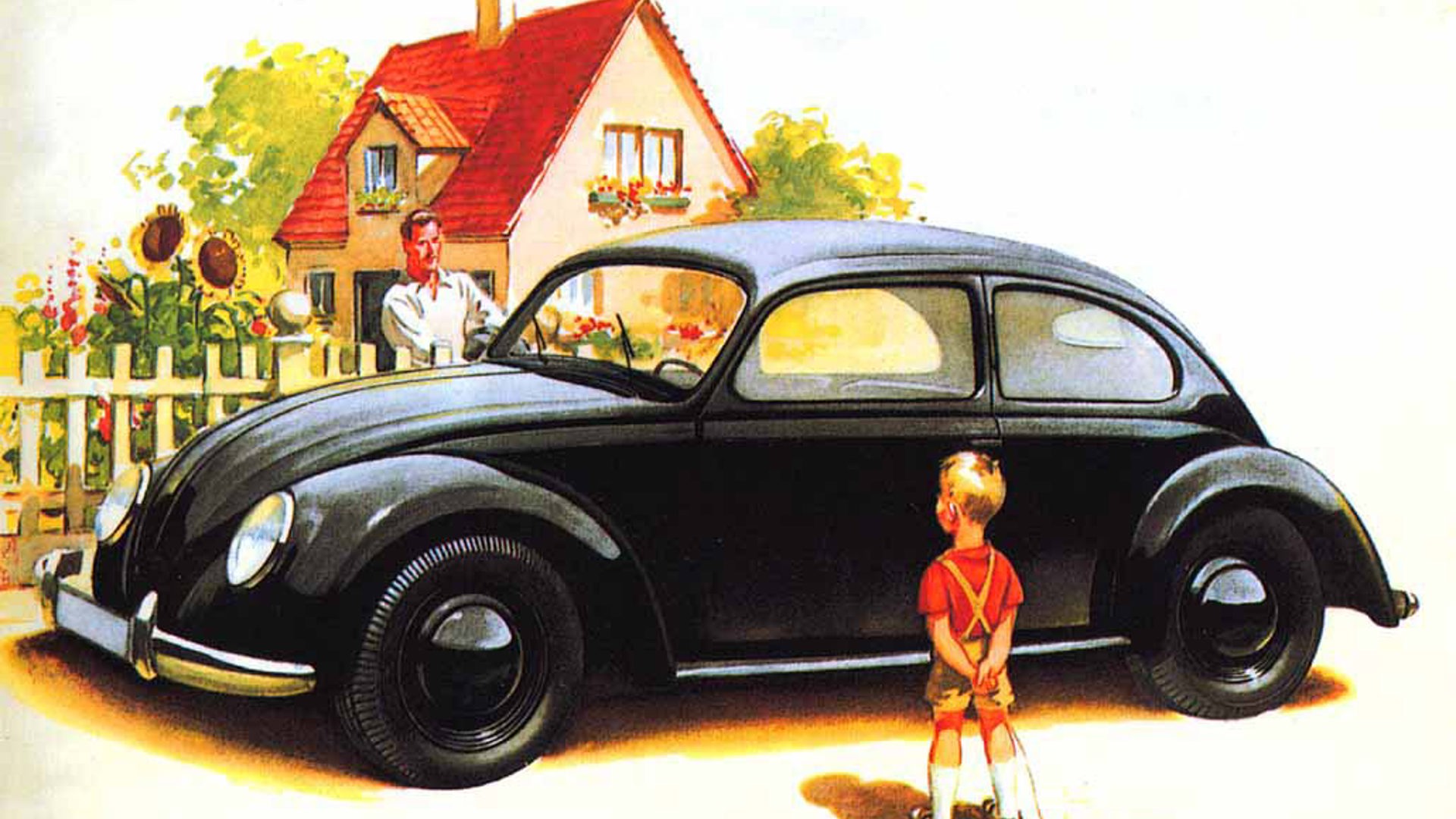
Instead, they became a car of the elite. Hitler dubbed the production version the Kraft-durch-Freude-Wagen (“strength-through-joy-car”, commonly called the KdF-wagen), but only a few were built by 1939. Instead, the Volkswagen factory was pumping out the jeep-like Kubewagens and amphibious Schwimmwagens by the thousands. There was even an all-wheel-drive Beetle called the Kommandeurswagen, which was built in small quantities as an officer's car. The people's car would have to take a back seat to the weapons of the coming war.
The Allied bombing campaign heavily damaged the Wolfsburg factory, with one bomb landing right by some production machinery – but, it didn't explode. After the war, the factory fell into the hands of the British army; under the Morgenthau plan, Germany was to be turned into a pastoral country, with minimal industrialization. The VW factory was to be dismantled and sent back to the UK.
However, no British automobile company was interested in the VW. They thought the car unattractive and slow. You also have to imagine they were flummoxed as to how to get an air-cooled engine to leak coolant.
However, British Major Ivan Hirst thought the plucky little Volkswagen showed promise. He cleaned up the rubble, defused the bomb sitting in the middle of the production line, and put people to work building VWs. By 1946, the factory was producing about 1,000 khaki-coloured Volkswagens per month.
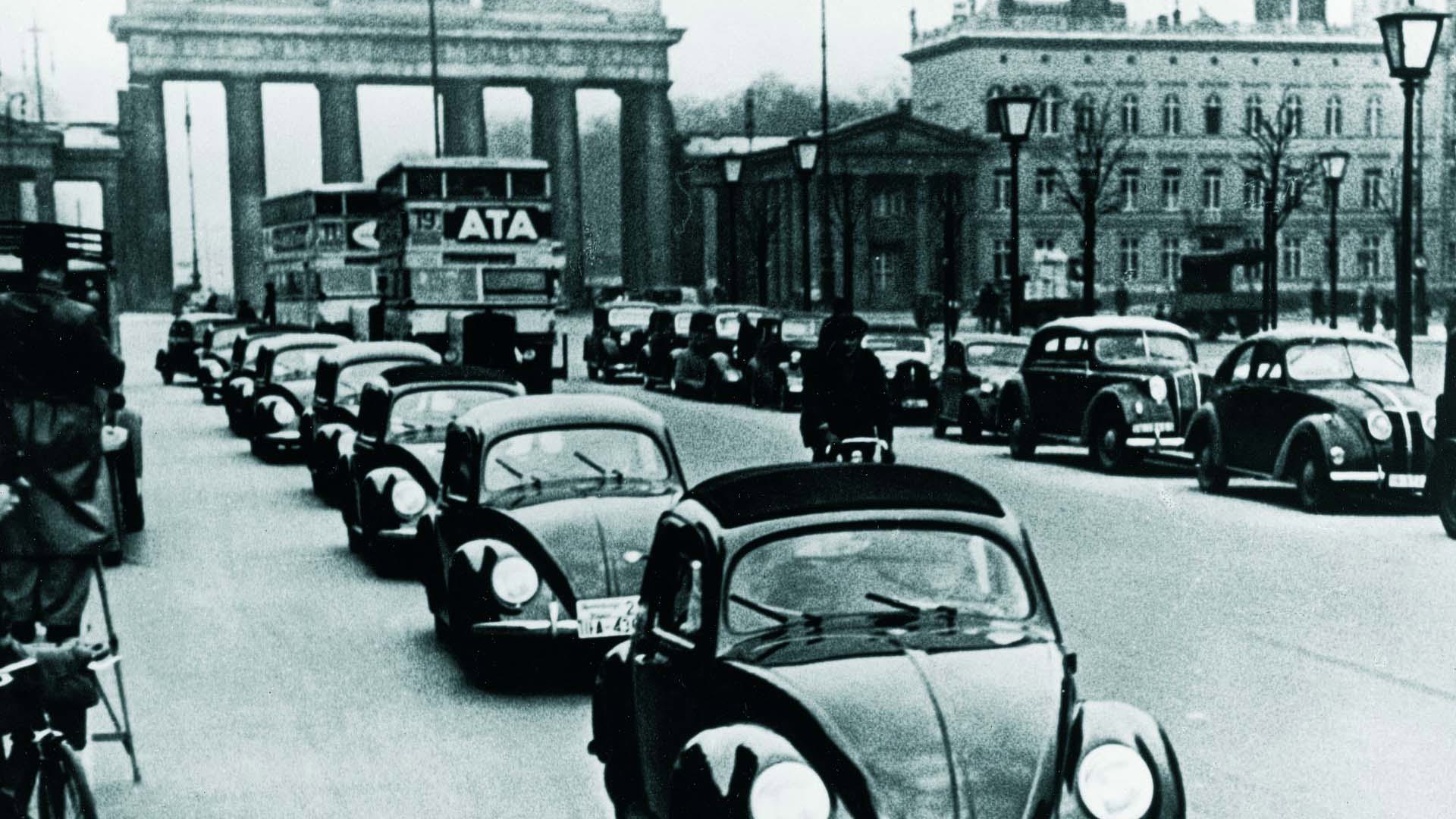
These first cars, called the Type 1, were modestly powered. A 1.1L air-cooled flat-four provided just 24 hp, but it was enough for the Bug to begin its slow spread. The nickname, incidentally, was first given to it by the German public, who called it the Kafer: German for Beetle.
Many people consider Hirst to be the first saviour of the Beetle; the next major figure in the life of this little car both saved the car and was saved by it. Before the war, Heinz Nordhoff had been in charge of the GM-owned Opel brand. He worked in a civilian capacity during WWII, and the Nazi party gave him an award for efficiency – and thus effectively ruined his post-war employability.
Nordhoff was working as a lowly manager in a service garage when he was put in charge of the factory in 1949. It was a miraculous opportunity for the man, and just the leader that the Beetle needed. Nordhoff was obsessed with two things: quality and production capability. He streamlined the assembly line, and at the same time hammered the Beetle into the incredibly durable little car we all now know. By 1955, the one millionth Volkswagen was built.
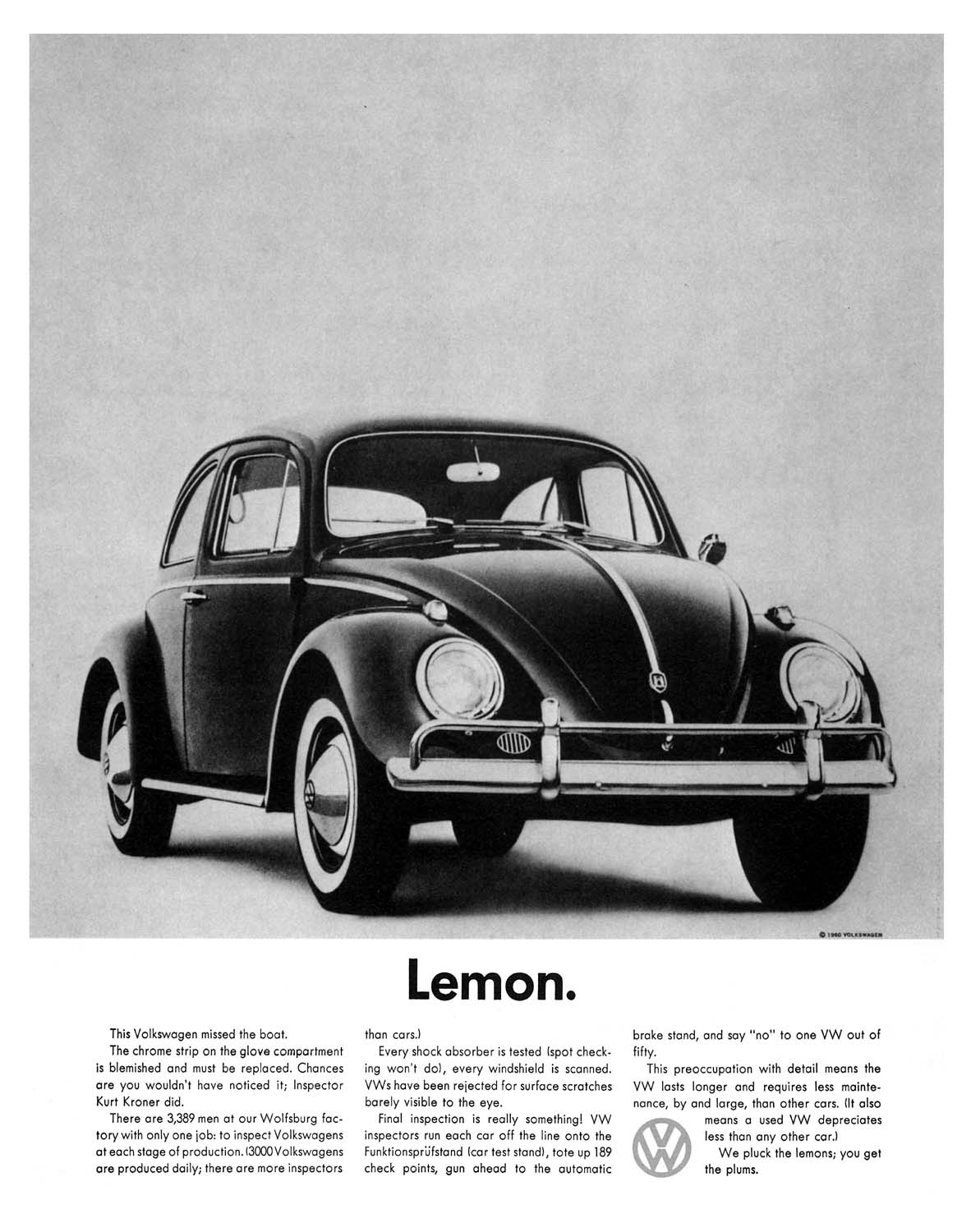
However, it's not enough to simply produce a good product, you have to convince people to buy it. Enter Doyle Dane Bernbach, the advertising company that gave us some of the most memorable VW ads. While other car companies featured lushly illustrated commercials promising luxury and style, DDB convinced VW to run a stark black and white ad with a simply-photographed Type 1 and a tagline that read, “Lemon.”
If you read closer, the advertisement touted VW's attention to quality control, noting that the pictured car was stopped for having a light blemish on the glovebox. The ad ended, “We pluck the lemons, you get the plums.” Genius – and it fit perfectly with the Volkswagen's cheerful, honest, humble character.
Final Drive: 1971 Volkswagen Super Beetle
Engine displacement and power grew over the years, up to 1.6L and 60 hp. However, during the 1960s, the Beetle peaked in popularity. While it and the VW van based on the car would forever become symbols of the decade, fewer and fewer people were buying them new as cars like the Datsun 510 and Toyota Corona arrived. Still, by 1972 more than 15 million VWs were sold, passing the Model T as the bestselling car of all time.
In this golden age of the Beetle, many special variants arrived. The first convertible was produced in 1949, and VW would make them right until 1980. A three-speed automatic transmission made the Bug easier to drive, and various changes to trim and horsepower levels increased slowly over the years. The real fun started when the Super Beetle arrived.
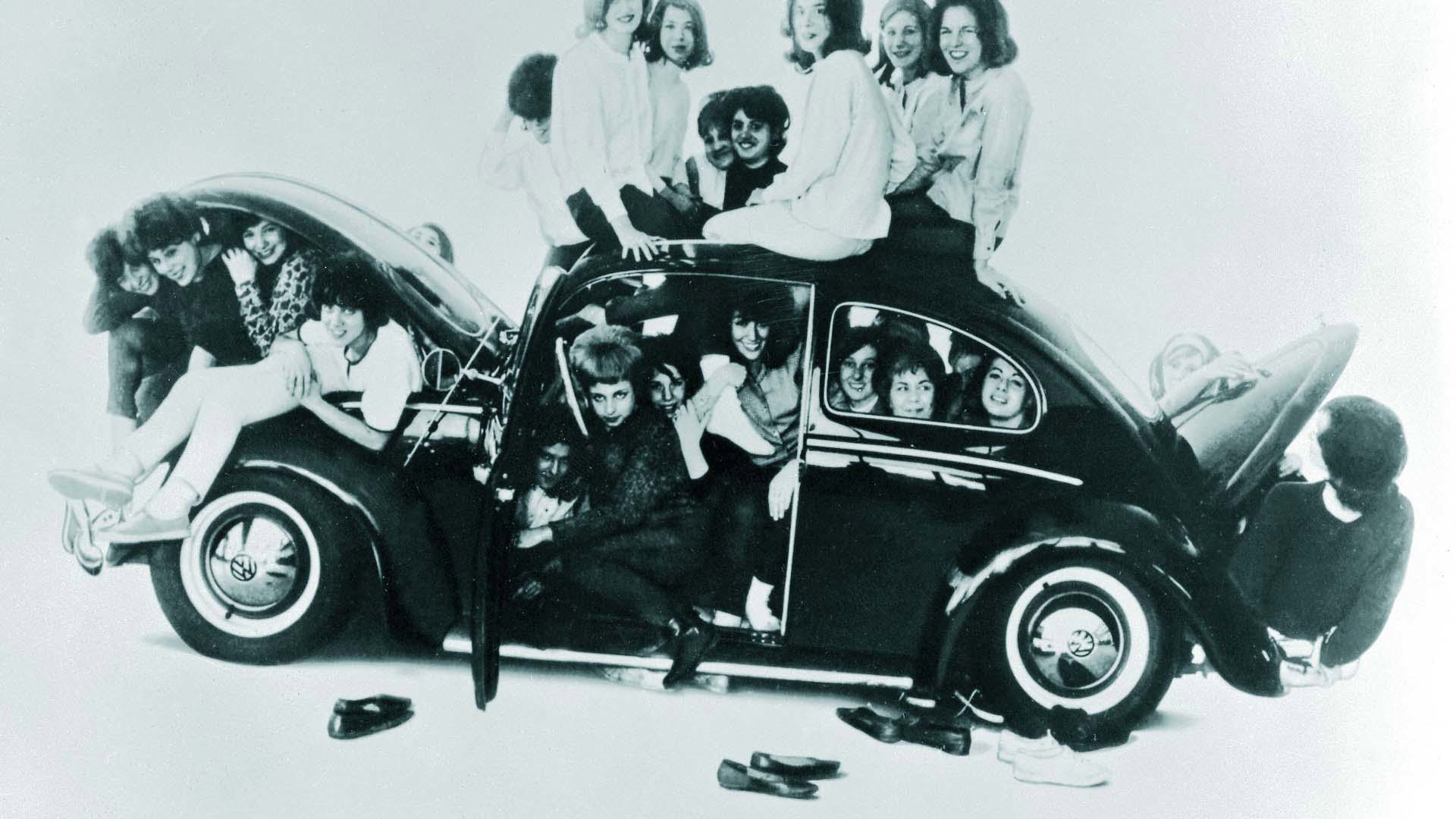
Released in 1971, the Super Beetle was just that: a larger version of the Beetle. Instead of the simple and spartan original, this new version came with an improved suspension and a host of special edition models. You could get a Sports Bug, Sun Bug, Love Bug, Fun Bug, Winter Bug, La Grande Bug, or a Champagne Bug. The Beetle had become kitschy and quirky. Not everyone loved that.
Besides which, in 1974 VW introduced the Golf, and that was pretty much the end of the Beetle as a people's car. Now it was a fashion item, and sales began to taper off. However, it wasn't yet done.
In Mexico, the Beetle enjoyed a fervent following. Famously, all seven VWs entered in the gruelling 1954 Carrera Panamerica endurance rally finished intact. VW started a new plant to keep up with Mexican demand for the Bug, and the first one rolled off the line in Puebla in 1967. They didn't stop making them until 2003. A mariachi band played as the final car rolled off the line.
The last of the air-cooled cars were called the Ultimate Editions, and featured special colours, extra chrome, and 15-inch alloys. A group of dealers even sent a white one to then-Pope John Paul II. There were many tears shed as the last car left the factory (with a mariachi band playing), but the Beetle's run was finally over.
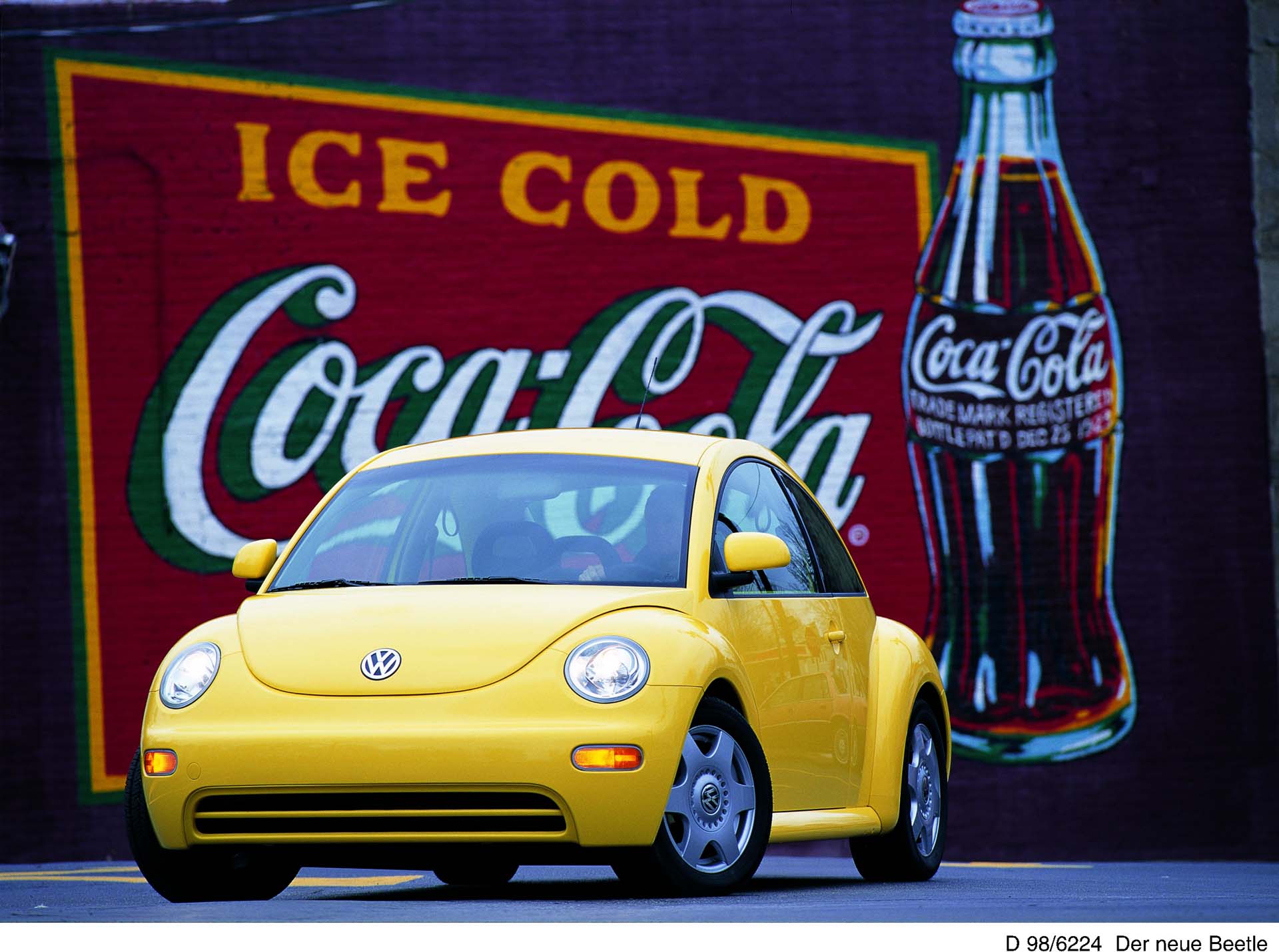
But some ideas are just too strong to kill. Even while the air-cooled cars were winding down production in Mexico, VW already had a solution for the Beetle-shaped void in everyone's heart. It was called the New Beetle, and while it was nothing like the original car underneath, it still had the same exterior charm.
Based on the Golf, the New Beetle was water-cooled, front-engined, and front-wheel-drive. VW started producing them in 1997 with essentially the same range of options and engines as the Golf. Aside from the shape and a few concessions to quirkiness (the famous vase mounted near the steering wheel), the New Beetle was a thoroughly modern car.
Packaging that shape on the Golf's platform added a few unintended quirks like a hugely long dashboard. However, your Beetle-shaped car was now easily able to keep up with modern traffic, especially when the 180 hp turbo models started arriving. You could also get a New Beetle with a turbodiesel for maximum thriftiness.
The most special of the New Beetles was the very rare Beetle RSI. With a 3.2L VR6 making 221 hp, a six-speed manual gearbox, and all-wheel drive, the RSI was hilariously fast – especially for a Beetle. Only 250 were made, making them rare and collectible.
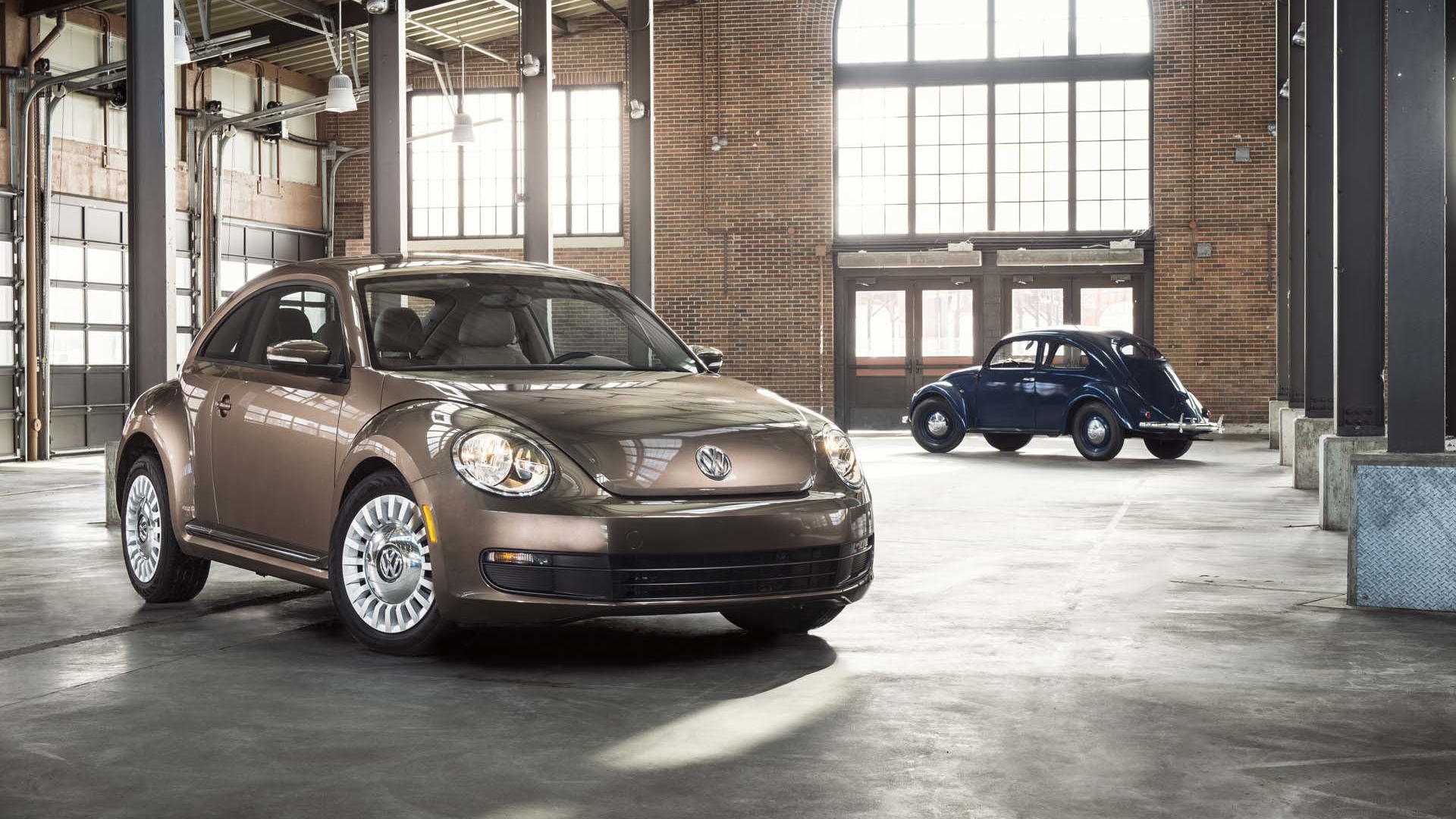
Just to make everyone confused, VW stopped calling the New Beetle “New” when they launched the updated version of the modern car. Now it was just called the Beetle, making the newest Beetle not the new New Beetle.
Efforts made to butch up the car's appearance created a more streamlined shape, with the Turbo models boasting some pretty aggressive styling. Special models like the yellow and black GSR promised GTI-like handling and 210 hp of turbocharged performance. The problem was, people who wanted a GTI just bought a GTI.
So, for the latest iteration of the Beetle, VW seems to be returning to the concept of fun first. The Beetle Dune channels the lifted Baja Bugs of the 1970s with a raised suspension (no all-wheel-drive though). The Pink Beetle is, well, a Pink Beetle. It's all a bit cutesy and kitschy.
Which is a good thing. The rest of VW's range is thoroughly sensible. Even the mighty Golf R is all business, devoid of wild styling. Walk into a brightly lit VW showroom, and the only bit of fun you're likely to find is a bright pink convertible. After all these years, the Beetle is still squarely at the heart of Volkswagen.
